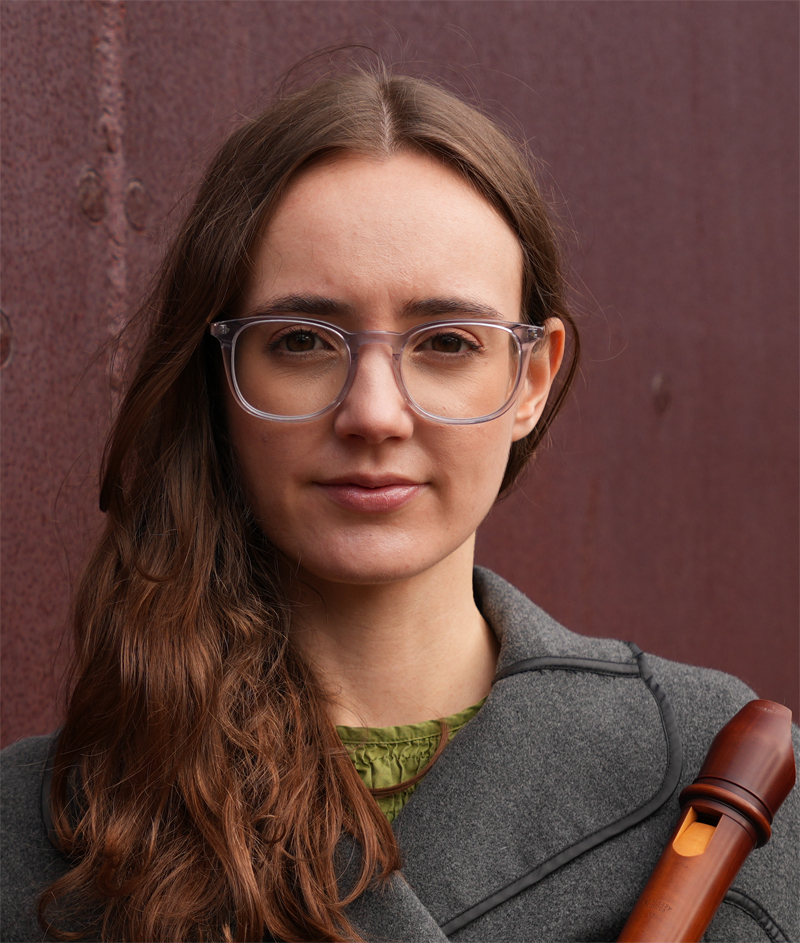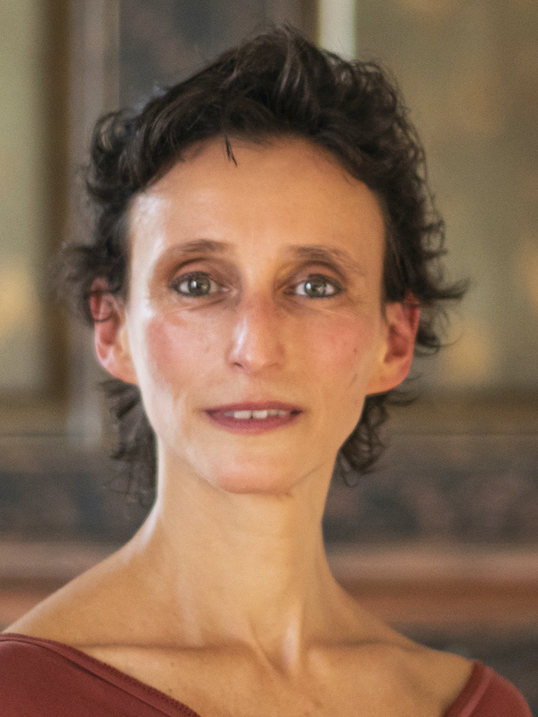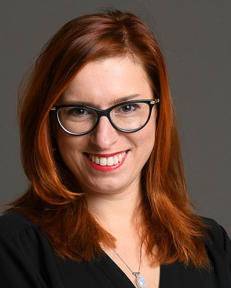Vorträge
Repertoires im Übergang - Antoine Pointels Tanzmusikpartituren und eine verschollene Tanznotation
(Giles Bennett)
Antoine Pointel (1660-1702) war ein Amsterdamer Musikverleger, der 1688 ("Deusiesme recueil des Dances et contre-dances") und 1700 ("Airs de Danses Angloises, Hollandoises et Francoises") Tanzmusiken inklusive der sonst oft fehlenden Bässe herausgab. Seine Drucke zeigen die Verbreitung und Anpassung verschiedener, teils national kodierter Tanzrepertoires und -formen: Französisch und niederländisch adaptierte, ursprünglich englische Country Dances; niederländische Nachkommen des Tanzrepertoires des frühen 17. Jahrhunderts; das "vieilles danses" Repertoire, das sich seit den 1650ern in Europa verbreitete; und, in seinem Druck von 1700, die neu auftretenden französischen "danses de ville".
Pointels Schwager Jean Eude du Temps war Tanzmeister an der Amsterdamse Schouwburg. 1695 bewarb er ein "Recueil" mit Contredanses, die in selbst erfundenen "caracteres" notiert seien, sowie "Tables generales des Positions" für die "changements" in "la danse Serieuse" und dem "Balet". Auf Grundlage von Pointels Tanzsammlungen und seinen Verbindungen können Hypothesen bezüglich des Inhalts dieser verschollenen Tanznotationsquelle formuliert werden.
Giles Bennett, München, Deutschland
 Giles Bennett, Historiker, wissenschaftlicher Mitarbeiter am Zentrum für Holocaust-Studien am Institut für Zeitgeschichte München, Tänzer im Ensemble "La Danza München" (Leitung: Jadwiga Nowaczek - www.barocktanz.de), Mitherausgeber von " Barocktanz im Zeichen französisch-deutschen Kulturtransfers: Quellen zur Tanzkultur um 1700" Hildesheim 2008, verschiedene Aufsätze zum Tanz vom 17. bis zum frühen 19. Jahrhundert und dessen Rezeption ab dem späten 19. Jahrhundert.
Giles Bennett, Historiker, wissenschaftlicher Mitarbeiter am Zentrum für Holocaust-Studien am Institut für Zeitgeschichte München, Tänzer im Ensemble "La Danza München" (Leitung: Jadwiga Nowaczek - www.barocktanz.de), Mitherausgeber von " Barocktanz im Zeichen französisch-deutschen Kulturtransfers: Quellen zur Tanzkultur um 1700" Hildesheim 2008, verschiedene Aufsätze zum Tanz vom 17. bis zum frühen 19. Jahrhundert und dessen Rezeption ab dem späten 19. Jahrhundert.
La Spagna - the story of the bassadanza and basse danse
(Adam Bregman)
Captivated by the enigmatic bassadanza and basse danse, scholars and performers have taken great pains to interpret, imagine, theorize, and recreate the performance practices of this lofty form of fifteenth-century court dance for over a century. But missing pieces of the puzzle have led to holes in our understanding of this genre, including the correlation of the choreographies to the accompanying music and regional peculiarities. This owes in part to the fact that, while two related, contemporary, Franco-Burgundian sources survive with music and choreographies, every other dance manual or collection contains choreographies or music at best. And a comparison of these sources presents a variety of musical or choreographic styles for which it hardly seems plausible to label with a single denomination—“basse danse” or “bassadanza”—especially looking further into the sixteenth century. There is one dance, La bassa di castiglia, or La Spagna, however, that has left a trail of music and choreographies throughout Renaissance sources—the only dance to survive in both Italian and Franco-Burgundian dance manuals, and with several contrasting choreographies and nearly 250 different musical settings—that marvelously come together to depict the evolutionary arc of this genre. Using this uniquely important dance, my paper tells the story of the extraordinary life of the basse danse and bassadanza in music and movement across time periods and geographic regions.
Adam Bregman, Basel, Schweiz
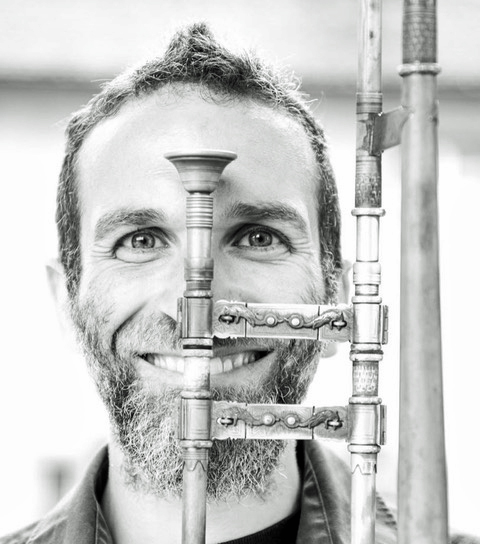 Adam Bregman is a trombonist, musicologist, and pedagogue whose performance, research, and teaching focuses on the late Middle Ages, Renaissance, and early Baroque eras. Adam strives to share his love for music of the past and his avid interest in historical performance practices playing historical trombones from every era, presenting his research, and working with musicians of all ages and abilities who share the same passion. His experience has led him to develop an approach to all areas of his musical work that inextricably combines practice and theory—engaging with music on its own terms—and adds insights from other disciplines. This working method pervades his teaching and his research, which focuses on the performance practices of wind musicians in the Renaissance and court dances of the fifteenth and sixteenth centuries. All while maintaining the highest level of artistry on stage, as co-director of Basel-based historical wind ensemble Capella Helvetica or performing with such European and North American ensembles as Oltremontano
Adam Bregman is a trombonist, musicologist, and pedagogue whose performance, research, and teaching focuses on the late Middle Ages, Renaissance, and early Baroque eras. Adam strives to share his love for music of the past and his avid interest in historical performance practices playing historical trombones from every era, presenting his research, and working with musicians of all ages and abilities who share the same passion. His experience has led him to develop an approach to all areas of his musical work that inextricably combines practice and theory—engaging with music on its own terms—and adds insights from other disciplines. This working method pervades his teaching and his research, which focuses on the performance practices of wind musicians in the Renaissance and court dances of the fifteenth and sixteenth centuries. All while maintaining the highest level of artistry on stage, as co-director of Basel-based historical wind ensemble Capella Helvetica or performing with such European and North American ensembles as Oltremontano
(Belgium) and Ciaramella (Los Angeles), Adam endeavors to instill his fascination with early music in modern audiences. Whether in the form of musical strains or words, he strives to contextualize the music of the past by telling a story so that, through music, we may better understand our cultural history, ourselves, and the ever-changing world around us.
(Photography: Cécile Mansuy)
Dancing Across Seas – French Dance in Australia’s Early Colonies
(Aimee Brown)
In search of refinement, connection and joy, for a colony built on convict labour, it is no surprise that European dance sailed its way to colonial Australia. This paper examines all aspects of French dance in the colonies of Sydney, Tasmania and Melbourne from 1788-1830. How was dance used to connect colonists to home and to each other, and did it play a role in the quest for a refined society? What part did the environment play in shaping the performance, execution, and education of the dances?
This paper draws from a wide array of sources to reconstruct an image of French dance in the early Australian colonies, including home practice books, newspapers, theatre pamphlets and exploration documents. We can look to the teaching methods of two of the early colonies’ French dancing masters, François Girard and Emanuel Charles Greene, and speculate as to how dance may have played a part in interactions between First Nations Australians, the English colonial population, and the French explorers. This paper explores practices on Gadigal, Wangal, Dharug, Palawa, and Naarm country; colonisation had a deep impact on Indigenous Australia and I acknowledge that this land is owned by First Nations Australians and pay my respect to elders past, present, and emerging.
Aimee Brown, Sydney, Australia
Aimee Brown is a musician, dancer and musicologist from Sydney, Australia. After completing her Honours in Historical Performance at Sydney Conservatorium of Music and Royal College of Music, London, she went on to write her Masters’ thesis on the education of musicians in baroque dance, by developing a simplified notation system. She has been fortunate to present her research on many occasions, including at the International Conference in Historical Performance in Queluz, Portugal and at the Seventh Annual Conference in Historical Performance in Indiana, USA, where she won the prize for student paper.
Aimee works as an historical tour guide, developing and delivering tours about Australia’s Indigenous, convict, and working-class histories. Here, she developed an interest in exploring the significance of dance in Australia’s colonial past.
Aimee runs an historical dance ensemble and studio, Sydney Baroque Ballet. She has taught and performed baroque dance across Australia, including at the National Folk Festival in Canberra and at the Adelaide Baroque Academy. She is thrilled to be attending the Historical Dance Symposium to learn, discuss and collaborate.
Kinski’s Oporto manuscript (1751): between influence and change
(Catarina Costa e Silva)
In the middle of the 18th century (1751), Felix Kinski’s belle dance manuscript is, simultaneously, a source of tradition and transformation. Integrating 12 ballroom dances, 11 for couple and 1 minuet à quatre in Beauchamp-Feuillet notation, this source highlights the effect of the repertoire’s travelling through Europe in a time of social and cultural changes. In this manuscript we find local approaches, meaning Iberian contributions, and we trace the transformations and the spreading of this choreographic and musical French repertoire through Iberia and Latin America. In this paper we will highlight some of these aspects, presenting new sources and inputs for the study of this repertoire’s evolution.
Catarina Costa e Silva, Portugal
Founder and Artistic Director of Portingaloise, company and festival of Early Dance and Music . Performer of contemporary and early dance, singer, choreographer and stage director. Collaborated with several European groups such as Ensemble Elyma, Divino Sospiro, Capella Sanctae Crucis, O Bando do Surunyo, Orquestra Barroca de Mateus, Orquestra 430 of Vigo, Baroque Orchestra of Casa da Música, among others. Early dance teacher at the Early Music Department of Escola Superior de Música e Artes do Espetáculo- Porto since 2010, as well as intensive training at the Ludovice Ensemble Academia, Early Music Week- Federal University of Minas Gerais, European Union Baroque Orchestra (EUBO), among others. Studied Early Dance with Béatrice Massin, Bruna Gondoni, Catherine Turocy, Cecília Gracio Moura, Diana Campóo, Françoise Denieau, Guillaume Jablonka, Jürgen Schrape, Marie Geneviève Massé, Ricardo Barros, among others. Diplomas: undergraduation in dance; degree in Art History - University of Porto; degree in Singing - ESMAE; Master Music-Theater Studies - University of Sheffield; currently concluding the Phd in Artistic Studies - University of Coimbra.
Dancing and Democracy: critical transitions in English theatre dance 1642 – 1660
(Anne Daye)
The English Civil War of 1642 was followed by the Commonwealth or Interregnum, a form of republican government under Oliver Cromwell, until the Restoration of the monarchy in 1660. Subject to a more powerful Parliament, Charles II did not have the same power or finances as his Stuart predecessors, resulting in profound change to theatre arts in Britain.
The court masque had fostered the emergence of a new profession of dance in England which was at a critical point of development when war disrupted lives and closed theatres. This paper will trace evidence for a hybrid form of the court masque combining drama and dance in the 1630s, a prototype of the ballet d’action, performed both in court settings and in the public theatres. This new genre could be organised to conform with the strictures of that regime. The theatrical entrepreneur, William Davenant, with a licence to open London theatres in 1660, was able to mount performances of drama, opera and dance that the royal court could not afford. Theatre dance had to survive in the commercial environment of the public theatres, subject to economies of scale but also freedom to experiment.
The timing of the Civil War was critical, nor only for the British system of government but also for dance. It led to the development of parliamentary democracy but severed dance from state support, unlike most European countries. In fact, state funding for the arts, including dance, did not commence until after the Second World War, following another transition in official attitudes to the arts.
Anne Daye, Bedford, UK
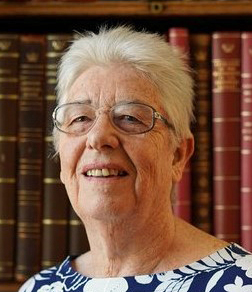 Anne Daye is a teacher, researcher and writer on historical dance, primarily of social and theatre dance of England within the European Renaissance. Her doctoral thesis 2008 broke new ground by discussing the performance and dance of the Jacobean masque. Investigating the vernacular forms of British dances is central to her studies: morris, country dance, reels, jigs, hornpipes. Anne publishes widely, most recently an article on Shakespeare’s use of masque for The Oxford Handbook of Shakespeare and the Dance 2019 and on court dancing for Performances at Court in the Age of Shakespeare for Cambridge University Press 2019. She also reconstructs dances from the original sources, publishing dance instruction books with extensive contextual notes accompanied by recorded music for HDS. Recent ones are Dances of the French Courts: 16th century Dance, Music and Song from France, A New Collection of Dances for Jane Austen and Dances for Queen Victoria: Music and instructions for country dances, quadrilles, polka, schottische and reels by Joseph Lowe,dancing master to the royal family
Anne Daye is a teacher, researcher and writer on historical dance, primarily of social and theatre dance of England within the European Renaissance. Her doctoral thesis 2008 broke new ground by discussing the performance and dance of the Jacobean masque. Investigating the vernacular forms of British dances is central to her studies: morris, country dance, reels, jigs, hornpipes. Anne publishes widely, most recently an article on Shakespeare’s use of masque for The Oxford Handbook of Shakespeare and the Dance 2019 and on court dancing for Performances at Court in the Age of Shakespeare for Cambridge University Press 2019. She also reconstructs dances from the original sources, publishing dance instruction books with extensive contextual notes accompanied by recorded music for HDS. Recent ones are Dances of the French Courts: 16th century Dance, Music and Song from France, A New Collection of Dances for Jane Austen and Dances for Queen Victoria: Music and instructions for country dances, quadrilles, polka, schottische and reels by Joseph Lowe,dancing master to the royal family
Following a career as lecturer in Dance History in HE Dance Departments, Anne continues to research in retirement and is Director of Education and Research for the Historical Dance Society.
Ballet in Transition: 1789-1840
(Edmund Fairfax)
While broad dance-history surveys not uncommonly state that the art of ballet underwent significant changes during the years 1789-1840, there has been, however, little attempt to discern what specific changes affected the technique and style of dance in French theaters, changes which, in turn, were widely imitated in other theaters. This illustrated presentation will attempt to fill the void in part, discussing the dissolution of the old system of distinct dance styles, which informed stage-dancing in the eighteenth century before the French Revolution; the emergence of a new blended style under the influence of the superstar dancer Auguste Vestris during the Revolution; and finally the advent of a reactionary style associated with the age of Romantic ballet and specifically with Marie and Philippe Taglioni. The presentation will look at some specifics in technique and choreography, notably height of leg-extensions, port de bras, pointe-work, step innovation, and the formation of enchaînements.
Edmund Fairfax, Toronto, Canada
Edmund Fairfax is an independent dance historian specializing in eighteenth‑century ballet. His groundbreaking study The Styles of Eighteenth‑Century Ballet (Scarecrow Press) appeared in 2003. He is currently working on completing a major study to be called The Technique of Eighteenth‑Century Ballet, as well as a reconstructive study, with a critical edition of the score, of Maximilien Gardel's 1777 pantomime ballet La chercheuse d'esprit (with Mojca Gal), one of the “classics” of the period. His comprehensive research overturns a number of antiquated notions concerning early ballet. From 2003 to 2008 he was an assistant and adviser to the dance company Ballet Espressivo in Toronto. His choreography in the eighteenth‑century style has appeared on stages in Germany, Switzerland, The Netherlands and Greece, most recently at the Potsdam Early Music Festival (2024) and the Athens World Congress of Dance Conference (2025). He studied classical ballet in Toronto, where he lives, and has an academic background in English literature and music history (University of Regina) and theoretical linguistics (University of Toronto), with special interest in the history of the early Germanic languages, particularly Gothic and Old English.
Matradur and Manimasque: two names and three dance traditions in the first third of the 19th century.
(Dmitry Filimonov)
The turn of the 19th century was the time of tectonic shifts that heavily affected the political and cultural landscape of the European countries. It is particularly fascinating to trace the spread of melodies and specific dances that formed distinct traditions of this period.
The dances Matradur (a longway with improvisational part) and Manimasque (a special quadrille) are frequently mentioned in Russian literature of the first third of the 19th century. At the same time, in Scandinavian countries, Thuringia and Britain, we find longways with names such as Money Musk, Molinasky, and Mollimasse. Although the names are similar to Manimasque, the figures of these dances resemble those of Matradour. The music gives even more puzzles as the tunes of Money Musk and Manimasque coincide. The tunes for Matradour also appear in Sweden, while Austrian music sources contain both Madratur and Manimasque.
In the present work we demonstrate that these two names refer to three closely intertwined dance traditions that were spread in the countries of the Baltic Sea and met at Viena Congress.
Dmitry Filomonov, Moscow, Russia
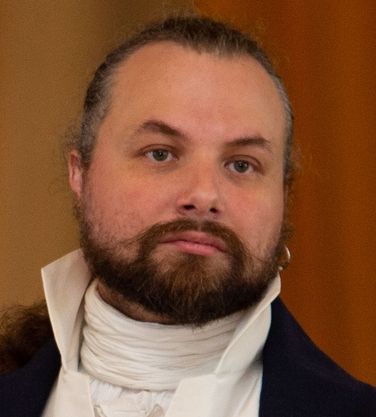 Dmitry Filimonov started his dancing career in 1993 as a dancesport dancer and came to early dances in 2002. Since 2007 he teaches historical dance in “Golden Forests” early dance school (a co-leader of the school). He is the head of the historical dance research seminar in Moscow. Dmitry gave lectures at many international conferences and has seven published articles on early dance topics from 16th to 19th.
Dmitry Filimonov started his dancing career in 1993 as a dancesport dancer and came to early dances in 2002. Since 2007 he teaches historical dance in “Golden Forests” early dance school (a co-leader of the school). He is the head of the historical dance research seminar in Moscow. Dmitry gave lectures at many international conferences and has seven published articles on early dance topics from 16th to 19th.
Dmitry graduated from Moscow State University and holds a Ph.D. in mathematics.
'Whole Stories by Action': Pantomime Ballets on the Eighteenth-Century London Stage
(Moira Goff)
In 1717, John Weaver's 'Dramatick Entertainment of Dancing' The Loves of Mars and Venus was first performed at London's Drury Lane Theatre. In 1781, Gaëtan Vestris brought his version of Noverre's Medée et Jason – advertised as a 'Ballet Tragique' – to London's opera house the King's Theatre. These milestones in the history of theatrical dance are well known, but what happened with stage dancing that (to quote Weaver) told 'whole Stories by Action' in London's theatres in the intervening years? Although pantomime afterpieces and their dancing have been the focus of most research, this paper will explore pantomime ballet - of the sort that Weaver envisaged - on the London stage between 1717 and 1781, identifying other productions as well as other dancers and choreographers that influenced the genre and contributed to its development. I will concentrate on dancing at the Drury Lane and Covent Garden theatres, but I will also look at significant performances at the King's Theatre and pursue some of the continental influences that were evident at all three.
Moira Goff, Berkhamsted, United Kingdom
Moira Goff is a dance historian specialising in ballroom and theatre dance from the late 17th to the late 18th century. She has a particular interest in dancing on the London stage between 1660 and 1776, although her more general research occasionally extends as far as 1830. She has published many articles and papers and currently writes a blog Dance in History. Her book The Incomparable Hester Santlow: A Dancer-Actress on the Georgian Stage appeared in 2007. More recently she has published articles in Dance Research on the dancer and royal dancing master Leach Glover and her essay ‘From the Louvre to the Waltz: Changing Relationships within the Couple Dance’ will be published as part of a collection on dance and sociability early in 2026. Moira continues to reconstruct the notated dances of the 18th century as an integral part of her research work.
Mit Tanzschritten auf dem Seil zu europaweitem Ruhm: Pierre Forioso und Mme Saqui
(Gerrit Berenike Heiter)
Tanz und Seiltanz stehen während des 17. und 18. Jahrhunderts in einer sehr engen Beziehung. Die Mitglieder der Akrobatik- und Seiltanztruppen treten vor allem anlässlich der verschiedenen Messen in Europa auf. Insbesondere in Paris erfreuen sie sich größter Beliebtheit, u. a. das „Théâtre des Grands danseurs du Roi“. Die Begeisterung für diese Art von Unterhaltung lässt auch nicht durch den revolutionären Regimewechsel nach. Im Gegenteil: Seiltänzer und Akrobaten bleiben ein unverzichtbarer Bestandteil der Pariser Theaterszene. Zu Beginn des 19. Jahrhunderts erreicht das Genre einen, in dieser Form später nie mehr erreichten, Ruhm: die Auftritte der Familie Forioso mit Pierre Forioso (1772–1846) sowie von Madame Saqui (1786–1866), Marguerite-Antoinette Lalanne – die „Tochter des berühmten Navarin, des ersten ‚Sauteurs‘ Ludwigs XVI.“– stehen im Zentrum der Fallstudie. Dabei wird ein besonderer Augenmerk auf die Virtuosität ihres Repertoires an Schritten und Tänzen wie Kontratanz, Allemande und Walzer gelegt.
Gerrit Berenike Heiter, Köln, Deutschland
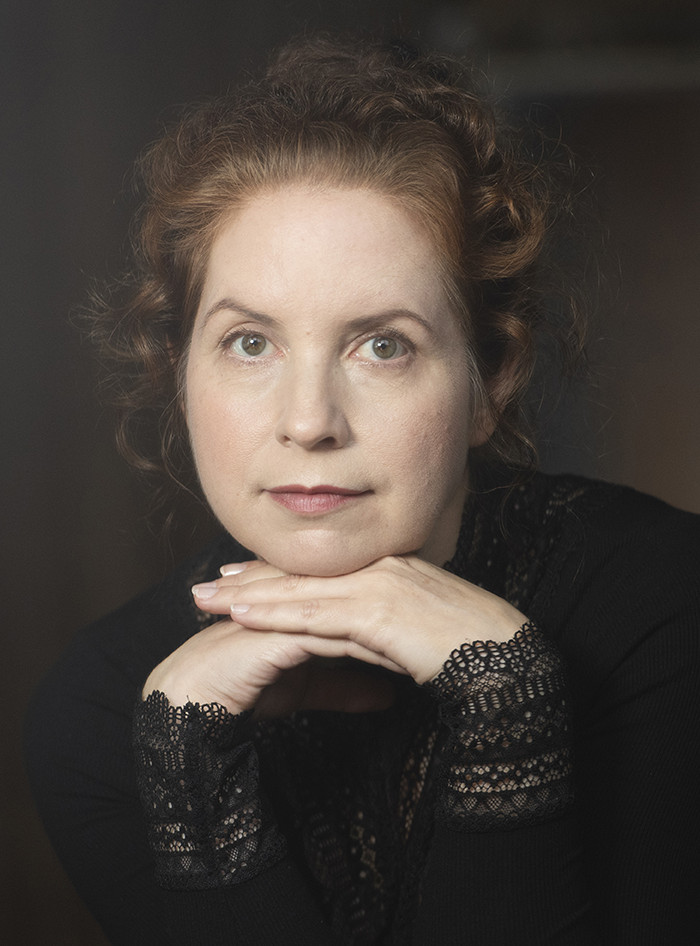 Gerrit Berenike Heiter arbeitet aktuell an ihrem kumulativen Dissertationsprojekt der Theaterwissenschaft an der Universität Wien. Ihre Forschungsarbeit beschäftigt sich mit europäischen Druckerzeugnissen zu Tanz von 1573 bis 1717. Sie unterrichtet Tanzgeschichte an der Hochschule für Musik und darstellende Kunst Mannheim. In ihrer künstlerischen Tätigkeit als Schauspielerin, Tänzerin und Pädagogin hat sie sich auf Körper- und Maskentheater, Commedia dell’arte, Barocktheater und historischen Tanz spezialisiert. Neben der Mitwirkung in barocken Musiktheaterprojekten ist sie im Rahmen zeitgenössischer Stücke zu sehen, die an der Schnittstelle zwischen Tanz, Musik, Performance und Theater stehen.
Gerrit Berenike Heiter arbeitet aktuell an ihrem kumulativen Dissertationsprojekt der Theaterwissenschaft an der Universität Wien. Ihre Forschungsarbeit beschäftigt sich mit europäischen Druckerzeugnissen zu Tanz von 1573 bis 1717. Sie unterrichtet Tanzgeschichte an der Hochschule für Musik und darstellende Kunst Mannheim. In ihrer künstlerischen Tätigkeit als Schauspielerin, Tänzerin und Pädagogin hat sie sich auf Körper- und Maskentheater, Commedia dell’arte, Barocktheater und historischen Tanz spezialisiert. Neben der Mitwirkung in barocken Musiktheaterprojekten ist sie im Rahmen zeitgenössischer Stücke zu sehen, die an der Schnittstelle zwischen Tanz, Musik, Performance und Theater stehen.
(Fotografie: Sarah Robine)
The Last Imperial Ball (1903)
(Anita Makuszewska)
During the period of Europeanization of Russia, court dances accompanied the radical social changes initiated by Peter the Great becoming the important link between Eastern and Western cultures. The process led to the noticeable dissonance between the practices of ancient dancing rituals and folk theatre and the new culture of court entertainment: spontaneity and freedom of pliaska stood in opposition to dance performed according to a fixed order (Lotman 1980, Levitt 2009, Sirotkina 2010).
In the 19th century ceremonies and theatrical productions confirmed that country emerged from the isolation striving to strengthen its position as a European and colonial power. This permutation of real political and military intentions with music and dance established the role of performing arts as a means of promoting scenarios of power (Wortman 2006).
The first attempt to evoke national heritage on the stage was made by Arthur Saint-Léon in The Little Humpbacked Horse (1864) with dancers performing authentic (and imaginary) folk dances.
However, the ultimate manifestation of nostalgia of pre-Petrine Russia was revealed in the Imperial Ball (1903) - the last bow of the Romanovs which marked the eve of modern empire.
Anita Makuszewska, Warsaw, Poland
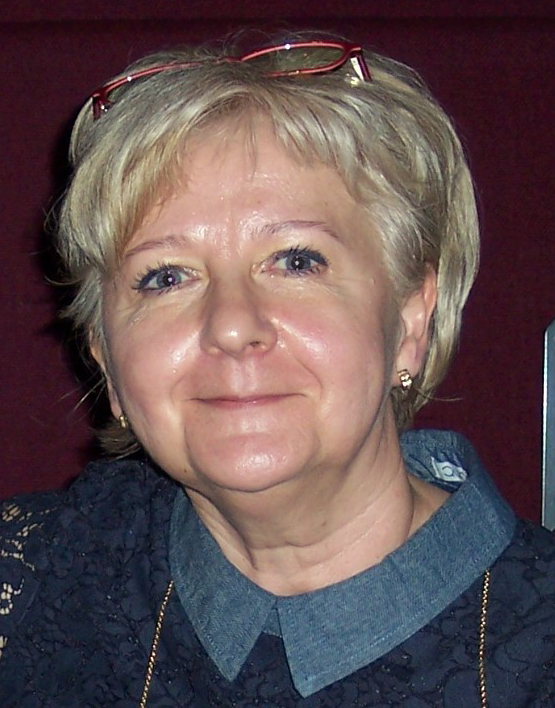 Anita Makuszewska graduated from the Warsaw Ballet School and the M. Rimsky-Korsakov State Conservatory of Music in St. Petersburg at the ballet directing department. She has more than twenty years’ experience in promoting and teaching the art of ballet in Poland and abroad. Currently she is lecturing at the Faculty of Psychology at the University SWPS (Warsaw, Poland).
Anita Makuszewska graduated from the Warsaw Ballet School and the M. Rimsky-Korsakov State Conservatory of Music in St. Petersburg at the ballet directing department. She has more than twenty years’ experience in promoting and teaching the art of ballet in Poland and abroad. Currently she is lecturing at the Faculty of Psychology at the University SWPS (Warsaw, Poland).
“From Ball Dance to English Country Dance: Continuity and Change in Early 18th-century England”
(Carol G. Marsh)
The Lorin manuscript Livre de Contredance (c1685) supplies Baroque dance steps for 13 English country dances, but Lorin himself admits that there is no uniformity in the steps used by English dancers. I suggest that a more organic approach to the problem of foot work in English country dancing might be provided by the notated ball dances that share the same titles and music as their country dance offspring, most of which were published within a few years of their ball dance predecessors.
This paper will present several case studies of these dance “twins,” focusing on the following questions: was the original tune modified in any way, e.g., meter, key, length, phrase structure? are the floor patterns of the ball dance reflected in the country dance? are any Baroque steps prescribed for the country dance, and if not, what suggestions are provided by the music and step vocabulary of the ball dance?
I suggest that the cessation of notated ball dances in the 1730s was one factor contributing to the increasing simplicity and uniformity of English country dances.
Carol G. Marsh, Washington DC, USA
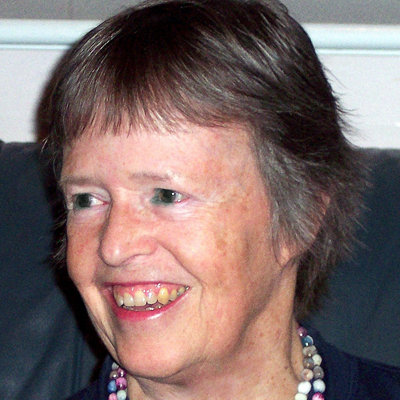 Carol G. Marsh is a Professor Emerita at the University of North Carolina Greensboro, where she taught music and dance history for 28 years. She received her Ph.D. in musicology from The City University of New York in 1985 with a dissertation on early 18th-century French court dance in England. Her publications include La Danse Noble (with Meredith Little) and Musical Theatre at the Court of Louis XIV: ‘Le Mariage de la Grosse Cathos’ (with Rebecca Harris-Warrick). She has contributed articles and reviews to New Grove, Dance Chronicle, Dance Research Journal, and other publications.
Carol G. Marsh is a Professor Emerita at the University of North Carolina Greensboro, where she taught music and dance history for 28 years. She received her Ph.D. in musicology from The City University of New York in 1985 with a dissertation on early 18th-century French court dance in England. Her publications include La Danse Noble (with Meredith Little) and Musical Theatre at the Court of Louis XIV: ‘Le Mariage de la Grosse Cathos’ (with Rebecca Harris-Warrick). She has contributed articles and reviews to New Grove, Dance Chronicle, Dance Research Journal, and other publications.
She currently lives in Washington DC and worries constantly about the collapse of democratic principles.
La fiesta de la Momería. (Barcelona, 1701)
(Pilar Montoya Chica)
On the occasion of the arrival to Barcelona and mariage of Philip V with Maria Luisa Gabriela of Savoy, the Council of Catalonia organized, in 1701, the comic festivity known as La Momería. Knowledge of this event has been preserved thanks to a detailed account dated 1702, housed in the Biblioteca de Catalunya.
It featured the participation of twelve ladies and an equal number of gentlemen, all members of the Catalan nobility, richly attired and performing a selection of the most representative dances of the time: Canario, Gran Duque, Xácara, Paradeta, Turdion, Torneo, Ayrosa catalana, and Minouet—the latter being one of the earliest documented instances of the minuet’s presence in Spain.
The contents of the present study include, in addition to the base text, the consultation and analysis of primary sources on dance complemented by instrumental compilations.
Finally, the primary aim of this research is to contribute to the understanding of such cultural phenomena and to approach a proposal for the recreation of these repertoires, acknowledging the necessary artistic liberties as an intrinsic part of the reconstruction process.
Pilar Montoya Chica, Zaragoza, Spain
 Trained at the Conservatorio Superior de Música de Aragón and at the Schola Cantorum Basiliensis, Pilar Montoya is one of the most relevant harpsichordists, organists and historical dancers on the current scene.
Trained at the Conservatorio Superior de Música de Aragón and at the Schola Cantorum Basiliensis, Pilar Montoya is one of the most relevant harpsichordists, organists and historical dancers on the current scene.
First Prize for harpsichord in Paris, graduated in Orchestra Conducting at Royal School of Music in London, her concert activity takes place in Europe, America and Japan. Regularly invited to participate in conferences and give master classes on baroque music and dance both in Spain and abroad.
Professor at Conservatorio Superior de Música de Castilla y León, Director of the early dance company “Los Comediantes del Arte”, Master’s professor at the Universidad de Salamanca and Universidad Autónoma de Madrid, author of articles on Spanish baroque dance published in specialized magazines, she is currently working on her Doctoral Thesis on theatrical dance under the reign of Felipe V directed by B. Lolo.
The ballerina's ascent:
pantomime, voluptuousness and the portrayal of women
in pantomime ballets during the second half of the eighteenth-century
(Béatrice Pfister)
With the rise of pantomime ballet in the 18th century, the audience was no longer supposed to admire dancers only for their beautiful body movements but also for their acting skills. How did this major transition affect ballerinas, traditionally lauded for both their natural attractiveness and talent? One might expect less biased male assessment; but the result was that voluptuousness was even more emphasized. This phenomenon was linked to the trend of libertine literature and ballet themes. But the mere addition of pantomime created an opportunity for ballerinas to be more seductive, even slightly provocative, when portraying passionate love stories, intense emotions or playing touching and ingenuous young women, often pursued by infatuated wealthy men. Our hypothesis is that while the late 18th century still featured extremely famous male dancers, a transition was underway, positioning women for a more prominent role in ballets, ultimately leading to their dominance over male dancers in the 19th century.
Béatrice Pfister, Paris, France:
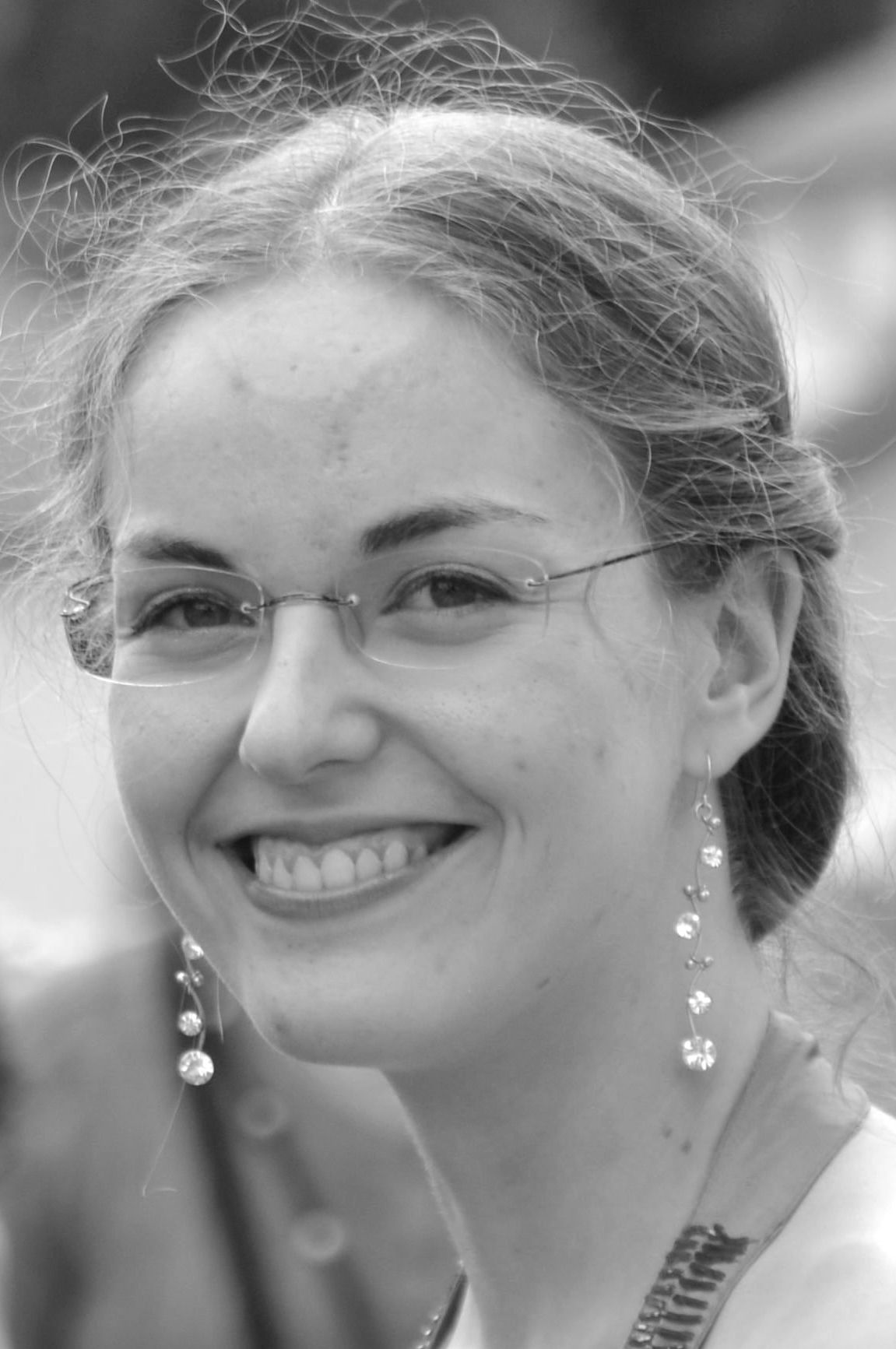 In 2009, Béatrice Pfister was admitted to the École Normale Supérieure (ENS) in Paris in the humanities. She obtained her Master’s degree in French literature in 2012. From 2013 to 2021, she held various teaching and research positions at French universities, including Sorbonne Nouvelle, Aix-Marseille, Versailles-Saint-Quentin, and Lille. Her teaching areas included world literature and French literature for literature students, as well as theatre history for students in the performing arts. In 2020, she defended her PhD in Comparative Literature at Sorbonne Nouvelle University in Paris under the supervision of Françoise Lavocat. Her dissertation, titled “Dance trying to conquer the status of art: apology and theory of ballet in French and Italian texts from the end of the 16th century to the end of the 18th century”, explored how dance in French and Italian writings from the late 16th to the late 18th century sought to establish itself as an art form.
In 2009, Béatrice Pfister was admitted to the École Normale Supérieure (ENS) in Paris in the humanities. She obtained her Master’s degree in French literature in 2012. From 2013 to 2021, she held various teaching and research positions at French universities, including Sorbonne Nouvelle, Aix-Marseille, Versailles-Saint-Quentin, and Lille. Her teaching areas included world literature and French literature for literature students, as well as theatre history for students in the performing arts. In 2020, she defended her PhD in Comparative Literature at Sorbonne Nouvelle University in Paris under the supervision of Françoise Lavocat. Her dissertation, titled “Dance trying to conquer the status of art: apology and theory of ballet in French and Italian texts from the end of the 16th century to the end of the 18th century”, explored how dance in French and Italian writings from the late 16th to the late 18th century sought to establish itself as an art form.
Theatre dance’s response to increased urbanisation in the late C19th
(Jane Pritchard)
The presentation, illustrated by a power point, will look at how theatre dance in Western Europe became dominated by large-scale spectacular productions aimed at new, large, urban audiences in the latter part of the C19th. These ballets provide a contrast to the Romantic ballets of the earlier part of the century. They include Italian ballo-grande such as Excelsior restaged internationally, and productions referred to as music-hall ballets. These new ballets were performed for long runs of up to a year in one venue and presented in newly-built theatres designed to house spectacles. Those included in the discussion are the Alhambra the home of ballet in London from 1865, the Eden-théâtre in Paris (1883-1895), and the Bourse in Brussels inspired by the Alhambra and Eden. The presentation will consider how the new ballets reflected both the modern world and provided escape from contemporary society; how ballets became a means of mass communication and how productions transferred from one metropolis to another.
Jane Pritchard, London, United Kingdom
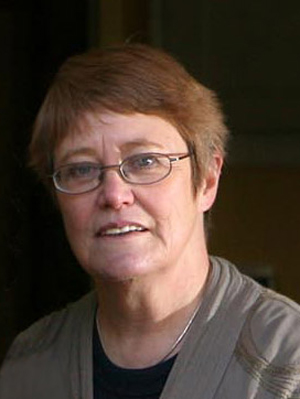 Jane Pritchard is curator of dance for the Victoria and Albert Museum, London. She co-curated Diaghilev and the Golden Age of the Ballets Russes, 1909–1929 and edited the accompanying book. She was previously archivist for Rambert Dance Company and English National Ballet. She has curated many exhibitions and displays, made radio programmes, curated seasons of dance films and contributes to numerous publications including the Oxford Dictionary of National Biography and The Annual Register. She was the author of Anna Pavlova Twentieth Century Ballerina. She has been a recipient of a Churchill Travel Fellowship and the Anthony Denning Research Award. Her primary research interest is in late Nineteenth Century ballet. She was awarded an MBE for services to the arts in the 2014 New Year’s Honours.
Jane Pritchard is curator of dance for the Victoria and Albert Museum, London. She co-curated Diaghilev and the Golden Age of the Ballets Russes, 1909–1929 and edited the accompanying book. She was previously archivist for Rambert Dance Company and English National Ballet. She has curated many exhibitions and displays, made radio programmes, curated seasons of dance films and contributes to numerous publications including the Oxford Dictionary of National Biography and The Annual Register. She was the author of Anna Pavlova Twentieth Century Ballerina. She has been a recipient of a Churchill Travel Fellowship and the Anthony Denning Research Award. Her primary research interest is in late Nineteenth Century ballet. She was awarded an MBE for services to the arts in the 2014 New Year’s Honours.
Ballet at Vienna’s Kärntnerthortheater After the Napoleonic War
(Mary and Robert Riggs)
The Congress of Vienna (1814-15) ushered in the Biedermeier era of peace and the reaffirmation of aristocratic autocracies with their support of the arts but also Metternich’s repressive censorship of them. Peace promoted a thriving international exchange of talents and styles at the Kärntnerthortheater, the court’s venue for opera and ballet. Austrian composers collaborated with prominent dancers/choreographers from France (Aumer, Henry) and Italy (F. Taglioni, Astolfi, Samengo, et al.).
Ballets were performed on average twelve times per month but always as the second, longer half of a double bill. The first was either a comic one-act French operetta or a one-act Singspiel. Multiple societal influences determined this acute juxtaposition of comedic vocal works with serious, often tragic ballets. The censored scenarios of the ballets were based on historical, biblical, or literary sources, and many incorporated national folk dances from the multi-ethnic Habsburg Empire and beyond. PowerPoint excerpts illustrate this rarely studied preromantic pantomimisches ballet repertoire in which Marie Taglioni and Fanny Elßler launched their careers.
Mary Barres Riggs, Oxford, MS, USA
 Mary Barres Riggs (B.A., art history, Harvard University; M.A., dance history, University of Utah, thesis: “John Neumeier and the Symphonic Ballet: Third Symphony of Gustav Mahler.” She has presented papers at national and international conferences, including: the Society for Dance History Scholars, the Congress on Research in Dance, the Sounding Habsburg Conference in NYC, and the EADH Conference in Edinburgh.
Mary Barres Riggs (B.A., art history, Harvard University; M.A., dance history, University of Utah, thesis: “John Neumeier and the Symphonic Ballet: Third Symphony of Gustav Mahler.” She has presented papers at national and international conferences, including: the Society for Dance History Scholars, the Congress on Research in Dance, the Sounding Habsburg Conference in NYC, and the EADH Conference in Edinburgh.
She studied ballet with Leon Danielian, Kathleen Crofton, and at Balanchine’s School of American Ballet. She learned four major roles from Bronislava Nijinska and made her professional debut dancing the “Rag Mazurka” in Nijinska’s Les Biches at the Jacob’s Pillow Dance Festival. On a six-week tour of Europe with the American Classical Ballet (with Rudolph Nureyev as guest artist), she performed principal and solo roles in Les Biches, Chopin Concerto, Graduation Ball, Carnaval, and La Sylphide. She also performed with the Metropolitan Opera Ballet and for two years with the ballet of the Niedersächsische Staatsoper in Hannover.
Robert Riggs, Oxford, MS, USA
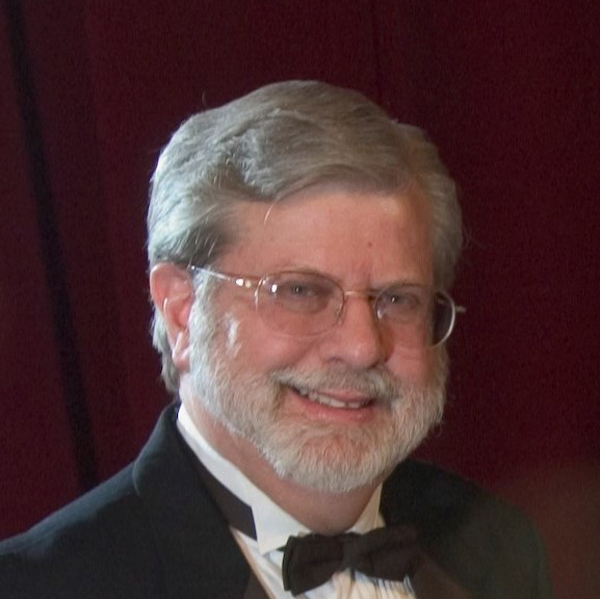 Robert Riggs (Ph.D., musicology, Harvard University) began his career as a violinist, spending five years performing with the Niedersächsisches Staatsorchester in Hannover. Most of his teaching career for musicology and violin was at the University of Mississippi, where he was Chair of the Department of Music, directed the University Artist Series, and performed with the Oxford Piano Trio. He has presented papers at numerous national and international conferences, and his publications include: articles on Mozart, performance practice, and aesthetics (in The Musical Quarterly, Mozart-Jahrbuch, Journal of Musicology, and College Music Society Symposium); two books, Leon Kirchner: Composer, Performer, and Teacher and The Violin (both with the University of Rochester Press); two chapters in The Creative Worlds of Joseph Joachim (Boydell and Brewer); and one chapter in Joseph Joachim: Identities | Identitäten (Olms Verlag).
Robert Riggs (Ph.D., musicology, Harvard University) began his career as a violinist, spending five years performing with the Niedersächsisches Staatsorchester in Hannover. Most of his teaching career for musicology and violin was at the University of Mississippi, where he was Chair of the Department of Music, directed the University Artist Series, and performed with the Oxford Piano Trio. He has presented papers at numerous national and international conferences, and his publications include: articles on Mozart, performance practice, and aesthetics (in The Musical Quarterly, Mozart-Jahrbuch, Journal of Musicology, and College Music Society Symposium); two books, Leon Kirchner: Composer, Performer, and Teacher and The Violin (both with the University of Rochester Press); two chapters in The Creative Worlds of Joseph Joachim (Boydell and Brewer); and one chapter in Joseph Joachim: Identities | Identitäten (Olms Verlag).
Mary and Robert Riggs have made joint presentations at musicology conferences in London, Toronto, Vienna, and at the University of Massachusetts in Amherst. In 2024 they published “Bach’s St. Matthew Passion: Ballet by John Neumeier” in BACH: Journal of the Riemenschneider Bach Institute.
Local Traditions, National Controversies: Dance on Trial in a Time of Transition
(Emily Winerock)
Changes in religious doctrine and observance in late sixteenth- and early seventeenth-century England led to an abrupt and contested reconsideration of the acceptability of dancing in various contexts, from church sponsorship of morris dancers to dancing on Sunday to any form of ‘mixt dancing’ of men and women together. The lack of consensus about what constituted a ‘use’ versus an ‘abuse’ led to widespread disagreement over whether long-established dance traditions needed to be altered or eliminated. This presentation examines conflicting views of dance in two court cases: a 1599 fornication case from Great Coxwell, Berkshire and a 1613 Star Chamber case against participants in the annual Whitsun Revel in Rangeworthy, Gloucestershire. In Great Coxwell, a defendant causes an uproar in the court by arguing that skipping church services to go dancing was more reprehensible than having a child out of wedlock. In Rangeworthy, disagreement about the acceptability of the parish’s dance-filled Whitsuntide traditions led to verbal and physical confrontations between the constable and parishioners. These cases illuminate the tensions between those who saw dancing as both a symbol of, and the means for committing, sin and sacrilege, and those who understood dancing as a performance of, and contributor to, neighbourliness and community cohesion.
Emily Winerock, Pittsburgh, PA, USA
 Emily Winerock teaches dance history at Point Park University in Pittsburgh, PA. Her research focuses on the practices and politics of dance in 16th- and 17th-century England. She received her B.A. from Princeton University, M.A. from the University of Sussex, and Ph.D. from the University of Toronto. Her publications include essays in Journal of the Northern Renaissance (2025), Shakespeare Jahrbuch (2021), Borrowers and Lenders (2017), and Dance Chronicle (2016), as well as chapters in The Oxford Handbook of Shakespeare and Dance (2019), The Oxford Handbook of Dance and Competition (2018), Playthings in Early Modernity (2017), The Sacralization of Space and Behavior in the Early Modern World (2015), and Worth and Repute: Valuing Gender in Late Medieval and Early Modern Europe (2011). She also serves as co-chair of the Early Dance Working Group of the Dance Studies Association, co-director of the Shakespeare and Dance Project, and copy editor for the journal Dance Chronicle.
Emily Winerock teaches dance history at Point Park University in Pittsburgh, PA. Her research focuses on the practices and politics of dance in 16th- and 17th-century England. She received her B.A. from Princeton University, M.A. from the University of Sussex, and Ph.D. from the University of Toronto. Her publications include essays in Journal of the Northern Renaissance (2025), Shakespeare Jahrbuch (2021), Borrowers and Lenders (2017), and Dance Chronicle (2016), as well as chapters in The Oxford Handbook of Shakespeare and Dance (2019), The Oxford Handbook of Dance and Competition (2018), Playthings in Early Modernity (2017), The Sacralization of Space and Behavior in the Early Modern World (2015), and Worth and Repute: Valuing Gender in Late Medieval and Early Modern Europe (2011). She also serves as co-chair of the Early Dance Working Group of the Dance Studies Association, co-director of the Shakespeare and Dance Project, and copy editor for the journal Dance Chronicle.
Dance, Food and Politics: Choreography at/of Banquets in Early Modern Italy
(Petra Zeller-Dotlačilová)
In the early modern period, banquets, or sumptuous dinners, were much more than convivial moments around a table. They were both ritual and entertainment, representational events of the rulers, a total artwork of art where culinary art intertwined with visual and performing arts. Scenography and decoration, music and dance, meals and drinks were conceived and organised as a complete performance, with its own meticulously designed dramaturgy.
This paper will investigate various forms and roles of dance at banquets, as well as their general “choreography”, in various courts of northern Italy from the sixteenth to the eighteenth centuries. More concretely, the case studies include the spectacular “cene” at the Ferrara court of the d’Este family, dancing banquets of the Savoia in Turin, and Milanese events influenced by Spanish and Austrian rulers. Who danced and why? How does the choreography relate to the occasion of the event? Did the dance correlate with the food and drinks served, and if so, how?
Comparing events from various periods and places will allow us to observe the transformations, as well as similarities, in the use of dance for aesthetic and political purposes at the banquets.
Petra Zeller-Dotlačilová, Basel, Schweiz
Petra Zeller Dotlačilová holds PhDs in Dance and Theatre Studies (Academy of Performing Arts in Prague, 2016, Stockholm University, 2020). In her research, she specializes in European dance history and theatrical costume from the sixteenth to the nineteenth centuries. She participated in the research projects ‘Performing Premodernity’ at Stockholm University (2014-2019) and ‘Ritual Design for the Ballet Stage (1650–1760)’ at Leipzig University (2015–2017). In 2021, she was awarded a scholarship by the Swedish Research Council for her three-year research project ‘The Fabrication of Performance: Processes and Politics of Costume-Making in the 18th Century’, conducted in collaboration with the Centre de musique baroque de Versailles. From 2024, she is a postdoc in the SNSF research project ‘The Night Side of Music: Towards a New Historiography of Musicking in Europe, 1500-1800’ at the University of Basel. Her monograph Performance Costume in Eighteenth-Century France will be published with Bloomsbury in 2025.
Wissenschaftliche Poster
Pierre Rameau in transit: Three weddings and some funerals
(Guillaume Jablonka)
Little is known today about Pierre Rameau's personal life, although he is a major contributor to the practice of what we call baroque dance. Régine Astier's entry in the International Encyclopedia of Dance from 1998 is the most thorough biographical account in English. (The article in the German Wikipedia translates most of Astier’s article and adds some information that has come to light more recently.) The 300th anniversary of Rameau’s two fundamental publications is the occasion of a conference taking place in Paris in December 2025 and focusing on "Teaching the manner of performing all steps". I decided to further investigate Pierre Rameau's personal life, and although my paper will not limit itself to biography, I am in contact with several dance historians and have benefited already from the research project EnDansant led by Marie Glon, Emmanuelle Delattre-Destemberg and Guillaume Sintès: as part of this project Yseult Martinez has been
commissioned to explore the French National Archives and digitize several documents from notarial records.
The poster will show some aspects of this new information, namely Rameau’s activities in various parts of France. In Lyon Pierre Rameau took part in the troupe of M. Leguay, who held the "privilege" for the Opéra of Lyon. There he married Elisabeth de La Haye, who, like him, was originally from the parish of Saint-Sulpice in Paris. Next they moved to Strasbourg where Elizabeth died a few months after giving birth to Jean Rameau, who was later a dancing master in La Rochelle. Pierre Rameau remarried there, to Catherine Muffat, and both came to Paris. His third marriage was to Marie-Anne Courbe, but they eventually left for Nanterre, a suburb of Paris, where they both died. In this poster, I plan to provide a map of the parts of France where Pierre Rameau travelled, supplemented by boxes linked to the different trips or towns, explaining what he did, with whom he mingled there, and also highlighting the three women with whom he was in transit.
Guillaume Jablonka, Asnières sur Seine, France
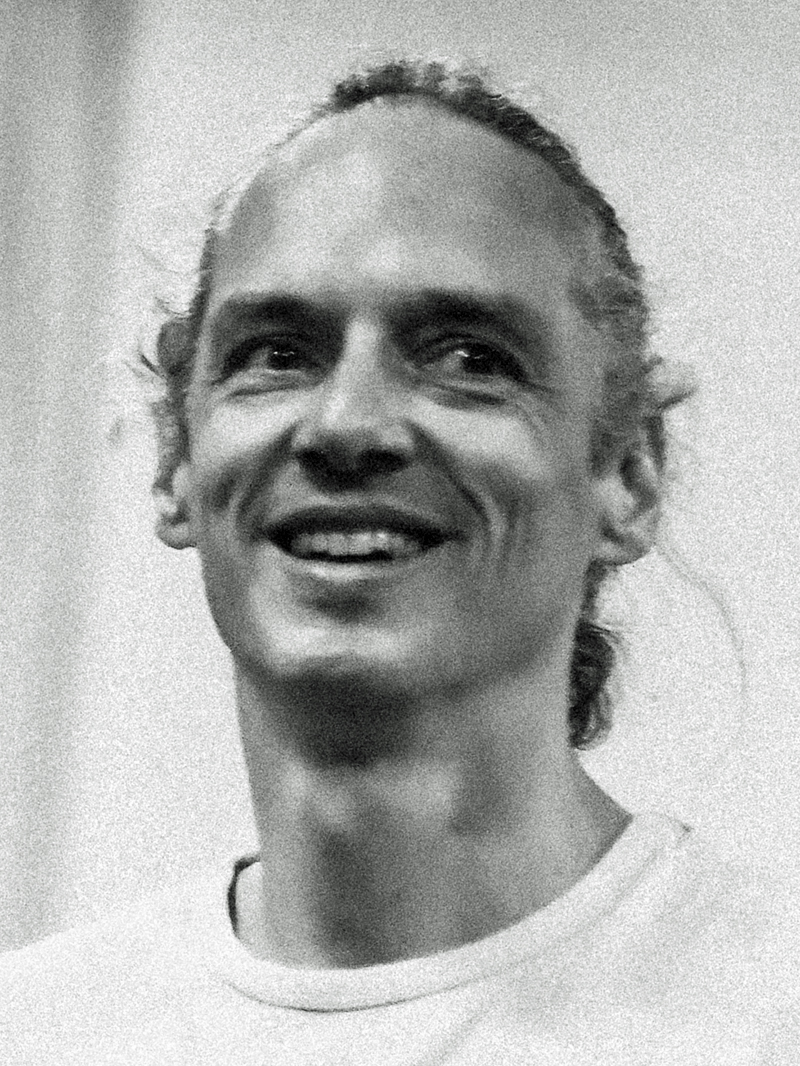 Guillaume Jablonka's career as a dancer took him to the Ballet du Nord (Roubaix), where he met Jean Guizerix and Wilfride Piollet, before incorporating their Barres Flexibles into his training and teaching. He discovered Baroque dance with Marie-Geneviève Massé's Cie l'Éventail and went on to found the Cie Divertimenty, creating Le Petit Chaperon rouge as a pantomime ballet (Festival Baroque de Pontoise) and Les Coulisses du Ballet vénitien (Opéra-Comique). At the same time, his research focuses on the reconstruction of dances notated during the eighteenth century, notably in the Ferrère manuscript. He has benefited from the Centre National de la Danse's Aide à la Recherche et au Patrimoine en Danse scheme in 2011 and 2020. As ballet master, he contributes to the practical application of the sources in performances at the Théâtre Molière Sorbonne.
Guillaume Jablonka's career as a dancer took him to the Ballet du Nord (Roubaix), where he met Jean Guizerix and Wilfride Piollet, before incorporating their Barres Flexibles into his training and teaching. He discovered Baroque dance with Marie-Geneviève Massé's Cie l'Éventail and went on to found the Cie Divertimenty, creating Le Petit Chaperon rouge as a pantomime ballet (Festival Baroque de Pontoise) and Les Coulisses du Ballet vénitien (Opéra-Comique). At the same time, his research focuses on the reconstruction of dances notated during the eighteenth century, notably in the Ferrère manuscript. He has benefited from the Centre National de la Danse's Aide à la Recherche et au Patrimoine en Danse scheme in 2011 and 2020. As ballet master, he contributes to the practical application of the sources in performances at the Théâtre Molière Sorbonne.
Dancing with AI: Adventures and Misadventures
(Alan Jones)
This poster presents some of the surprising advantages that the controversial field of Artificial Intelligence offers to researchers in early dance, particularly to those who specialize in transitional periods or obscure repertory that left behind limited iconography. However, every new door that AI opens is liable to lead to technical roadblocks and deceptive pathways, even potentially dangerous trains of thought. These shortcomings are represented as well.
Alan Jones, Paris, France
 Paris-based researcher and choreographer Alan Jones has given papers and classes at Burg Rothenfels on a number of occasions. Having performed Baroque dance widely in North America and Europe from the 1980s into the early 2000s, he now gives priority to choreographies of the late 18th and early 19th centuries, principally those of the United States. A frequent collaborator with the New York Baroque Dance Company (Catherine Turocy, director), he recently realized a suite of American dances for the company, including the Congo Minuet; this project was conducted in collaboration with Julia Bengtsson, and with support from the Centre National de la Danse. In addition to papers at Burg Rothenfels, he has presented at conferences hosted by the City University of New York, the court theater of Český Krumlov, and the Centre de Musique Baroque de Versailles, among others. He is presently laying the groundwork for a website chronicling all the dancers, ballet masters, and dancing masters active in the early United States, along with the repertory they created. Contact: early.ballet.usa@gmail.com.
Paris-based researcher and choreographer Alan Jones has given papers and classes at Burg Rothenfels on a number of occasions. Having performed Baroque dance widely in North America and Europe from the 1980s into the early 2000s, he now gives priority to choreographies of the late 18th and early 19th centuries, principally those of the United States. A frequent collaborator with the New York Baroque Dance Company (Catherine Turocy, director), he recently realized a suite of American dances for the company, including the Congo Minuet; this project was conducted in collaboration with Julia Bengtsson, and with support from the Centre National de la Danse. In addition to papers at Burg Rothenfels, he has presented at conferences hosted by the City University of New York, the court theater of Český Krumlov, and the Centre de Musique Baroque de Versailles, among others. He is presently laying the groundwork for a website chronicling all the dancers, ballet masters, and dancing masters active in the early United States, along with the repertory they created. Contact: early.ballet.usa@gmail.com.
The principles of researching the mutual influence of dances (using the example of tango and its predecessors)
(Dmitry Nikitin)
The history of the tango's formation (1854–ca. 1900) is well documented. This world-famous dance is truly folk and has absorbed various cultural traditions. It provides a useful model for researching the mutual influence of dances. Studying the history of the tango and analysing its predecessors, such as the Habanera, the Milonga, the Andalusian tango, the Malambo, the European enlazar dances and the Candombe, allows us to formulate the principles proposed below:
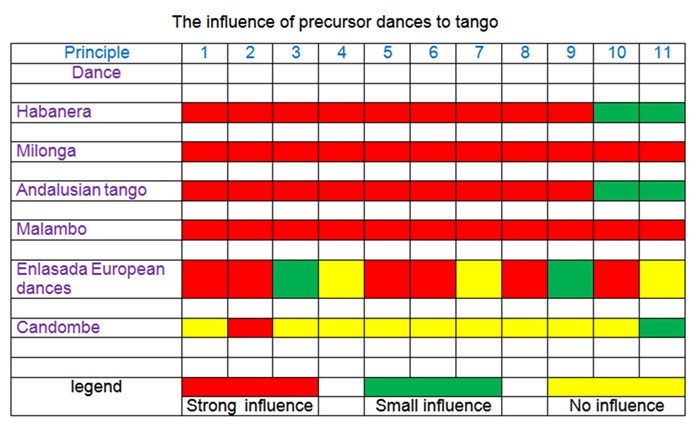 Gradual changes over time.
Gradual changes over time.- Contact between dances in space and time.
- Rhythm and other musical characteristics.
- Identical lyrics, sizes and themes.
- Changes in choreography, including not only movements and figures, but also types of sets, drama, participants and their roles.
- Same native dancers.
- Similar ideas.
- The existence of a borrowing mechanism, including its goals and reasons.
- Presenting the dance to borrowers in a way they can understand.
- The borrowed dance should be widely represented.
- Conducting a linguistic study of dance-related words.
Thus, researching the mutual influence between dances is a multifactorial procedure. The same principles should be applied to the process of reconstructing historical dances. The table below shows the influence of predecessor dances on tango.
Dmitry Nikitin, Vladimir, Russia
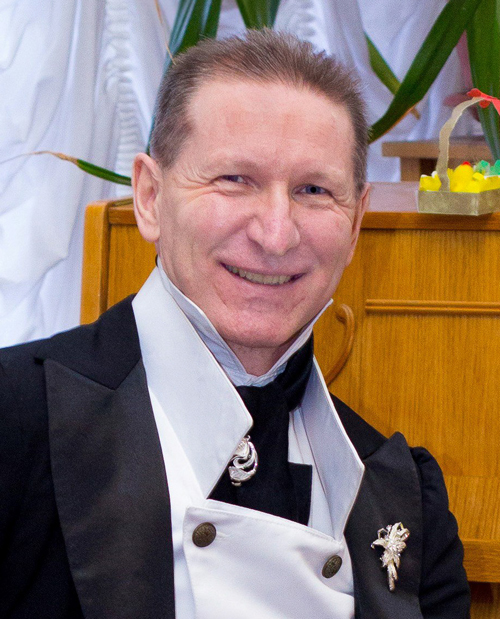 Dmitry Nikitin began to study historical social dance in 1975 at the age of 16 under the guidance of the choreographer-methodist of the Ministry of Culture of the USSR Golden O. D. For a long time, he worked in the system of higher and special education, and also taught various types of dance. He obtained his PhD in 1989. In 2011, he founded the Historical and Social Dance Club in Vladimir. He is currently its head and teacher. His areas of activity include the reconstruction of 19th-century and modern dances, dance theory, and the theory and practice of dance pedagogy, as well as the organisation of historical events. He has published several articles on dance reconstruction and delivered lectures at conferences.
Dmitry Nikitin began to study historical social dance in 1975 at the age of 16 under the guidance of the choreographer-methodist of the Ministry of Culture of the USSR Golden O. D. For a long time, he worked in the system of higher and special education, and also taught various types of dance. He obtained his PhD in 1989. In 2011, he founded the Historical and Social Dance Club in Vladimir. He is currently its head and teacher. His areas of activity include the reconstruction of 19th-century and modern dances, dance theory, and the theory and practice of dance pedagogy, as well as the organisation of historical events. He has published several articles on dance reconstruction and delivered lectures at conferences.
The History and Evolution of Money Musk
(Barbara Menard Pugliese, Antonia Pugliese)
We begin with a short biography of Sir Archibald Grant of Monemusk, his scandalous foray into speculation, his acquisition of wealth through marriage to a widow who owned West Indies property and enslaved people, and finally his settling down to become a patron of music and dance. From there we trace the popularity of the tune Money Musk in the American Revolution and the contemporary prevalence of Money Musk as a dance. We examine different versions of the dance and how the mechanics of the dance change over time to reflect social dance style. Then we describe revivals of Money Musk in folk dance and current day movements to re-popularize the dance.
Barbara Menard Pugliese, Medford, MA, USA
Barbara Pugliese has been co-director of the Commonwealth Vintage Dancers since 2007. Founded in 1983, CVD specializes in reconstructing, teaching, and performing American ballroom dances of the Nineteenth and early Twentieth Centuries. The dance company sponsored an international dance week in Newport, Rhode Island for 25 years, and are currently hosting seven formal balls a year as well as performing for museums and festivals. Barbara researches ballroom dances from 1770 to 1929, and is an expert in material culture and women's studies of the same time period. She has a Masters in Library and Information Science and has worked as an administrator for human rights charities and academic institutions.
Antonia Pugliese, Woburn, MA, USA
Dr. Antonia Pugliese has been co-director of the Commonwealth Vintage Dancers since 2012. She researches and reconstructs dancing and social events of the years 1770 to 1929. Her teaching style, which is exacting but tempered with kindness and humor, is popular with young people. She loves curating fairytale experiences for dancers, and recently taught the Charleston to a crowd of over 800 people at the Great Gatsby Ball in Boston. Antonia recently received her PhD in Molecular Microbiology from Tufts University.
Workshops
The Art of Port de Bras in Tomlinson’s “Art of Dancing”
(Caroline Copeland)
This workshop will explore some of the unique elements relating to port de bra in Kellom Tomlinson's treatise "The Art of Dancing" (1735). Tomlinson’s description of the movement of the arms is vague but he offers tantalizing details, evocative images, and specific action initiation points for the practitioner to consider and explore. The treatise’s engraved plates are even more intriguing depicting dancing figures with gathered fingers, lifted elbows, along with leaning and spiraling torsos. Do Tomlinson’s explanations and illustrations signal a new approach, a different style, or just additional possibilities for the performer?
Taking both his written description and the engravings into consideration, we will explore the following lines of enquiry and embodiment:
- The concept of épaulement, or shading of the shoulders, expressed on different planes of action: vertical, horizontal, and sagittal.
- Initiating points of the circular action of the wrists and elbow
- Moving from the distal ends of the arms (fingers/wrists) versus moving from the spinal column.
- The different shape and weight of the arms when the elbow is hanging versus lifted.
- Dropping the whole arm in making a circle vs. keeping the elbow lifted.
And finally, we will put this port de bras into action using basic dance phrases.
Caroline Copeland, Great Neck, NY, USA
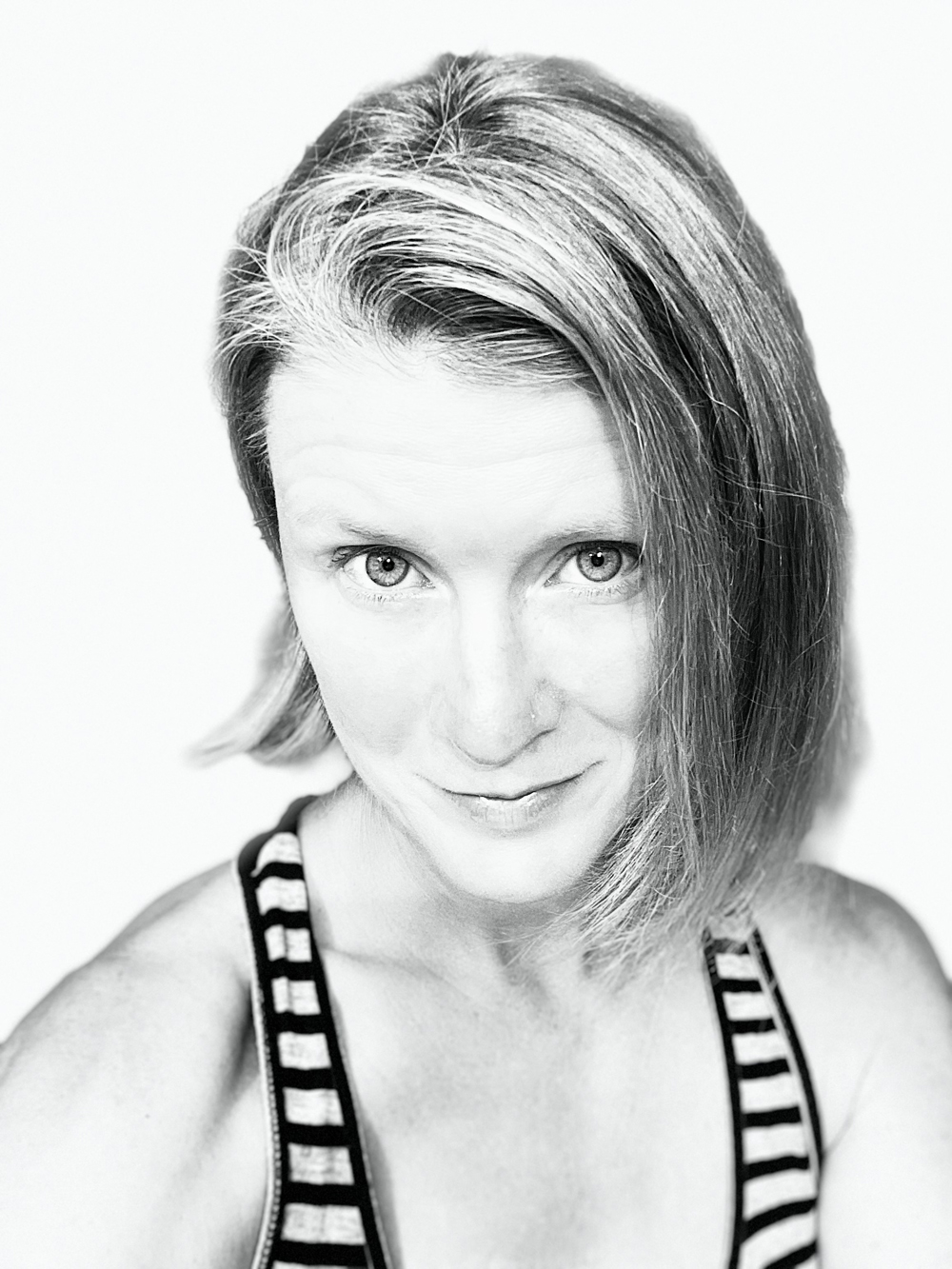 Caroline Copeland is the Associate Director of the New York Baroque Dance Company, appearing with the troupe at the Drottningholm Theater, the International Händel-Festspiele Göttingen, Guggenheim Museum, and Potsdam Sanssouci Music Festival. She is a dancer and choreographer at the Boston Early Music Festival where choreographic credits include Campra's Le Carnaval de Venise, Händel’s Almira, Monteverdi’s Il Ritorno d’Ulisse in Patria, and Steffani’s Niobe. As a soloist, Caroline has collaborated with many groups around the US and Europe including Nordic Baroque Dancers, The New Dutch Academy, Juilliard415, Cantata Profana, and Mertz Trio. Her choreography has been presented at The Metropolitan Museum of Art, Lincoln Center, The Kennedy Center, The Public Theater, and the Philipszaal in The Hague. She is on the dance faculties of Hofstra University and SUNY Purchase Conservatory of Dance and a guest lecturer for Juilliard’s Historical Performance program. She holds a BA in Dance/Goucher College and MFA in Dance/Sarah Lawrence College.
Caroline Copeland is the Associate Director of the New York Baroque Dance Company, appearing with the troupe at the Drottningholm Theater, the International Händel-Festspiele Göttingen, Guggenheim Museum, and Potsdam Sanssouci Music Festival. She is a dancer and choreographer at the Boston Early Music Festival where choreographic credits include Campra's Le Carnaval de Venise, Händel’s Almira, Monteverdi’s Il Ritorno d’Ulisse in Patria, and Steffani’s Niobe. As a soloist, Caroline has collaborated with many groups around the US and Europe including Nordic Baroque Dancers, The New Dutch Academy, Juilliard415, Cantata Profana, and Mertz Trio. Her choreography has been presented at The Metropolitan Museum of Art, Lincoln Center, The Kennedy Center, The Public Theater, and the Philipszaal in The Hague. She is on the dance faculties of Hofstra University and SUNY Purchase Conservatory of Dance and a guest lecturer for Juilliard’s Historical Performance program. She holds a BA in Dance/Goucher College and MFA in Dance/Sarah Lawrence College.
La Gavotine - Variation on the Gavotte de Vestris
The Gavotte de Vestris enjoyed a rare longevity for an eighteenth-century dance, lasting well into the twentieth century. It was originally a solo performed by Auguste Vestris, choreographed by Maximilien Gardel, in the comic opera Panurge dans l'Ile des Lanternes, by André-Ernest-Modeste Grétry, first performed by the Académie Royale de Musique on January the 25th 1785. La Gavotte de Vestris has been performed many times by different dancing masters, mainly in a version for one couple, with variants or arrangements and variations for several dancers (Jean-Etienne Despréaux, Michel Saint-Léon, Carlo Blasis, Edward Alcott Théleur, Gustave Desrat, Friedrich Albert Zorn, Eugène Giraudet, Georges d'Egville...).
The manuscript Dance Book T B. 1826 (2026 will mark the 200th anniversary of this manuscript) contains a version for three dancers and a variation for four couples. The workshop is an opportunity to discover La Gavotine, a dance for four couples based on the principle of a quadrille using the “solo” parts of the Gavotte de Vestris.
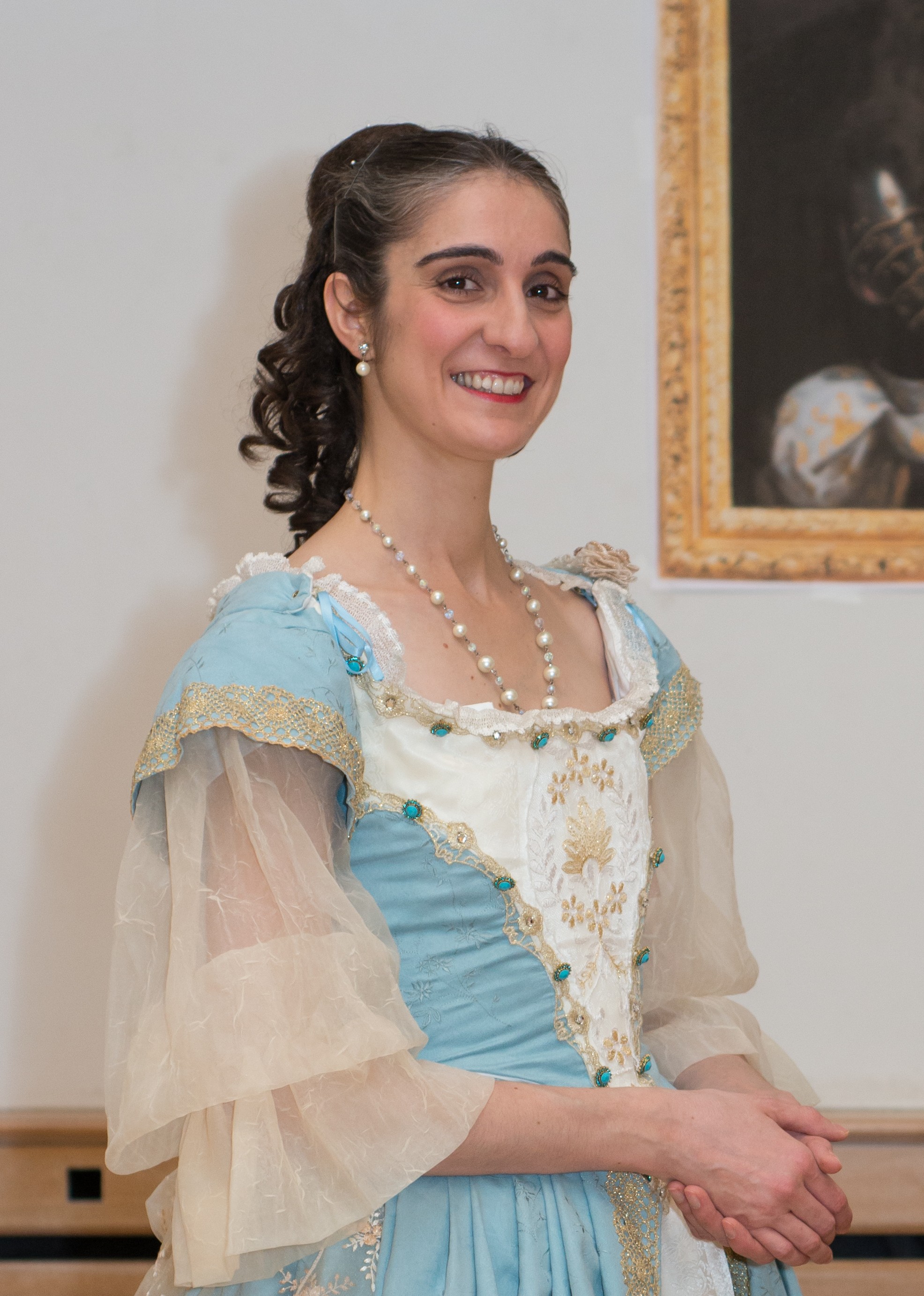 Irène Feste, Arcueil, France
Irène Feste, Arcueil, France
A dancer, choreographer and teacher specialized in early dance from the 16th to the 19th century. She trained in Baroque dance with Christine Bayle and her company L'Eclat des Muses. She has performed with several companies in France and Europe (Danses au (Pas)sé, Les Corps Eloquents, Divertimenty, Doulce Mémoire, Il Ballo...). She has choreographed for the theatre in productions by Pascal Ruiz and for the cinema (Les Trois Mousquetaires by Martin Bourboulon; Le Comte de Monte-Cristo by Alexandre De La Patellière and Matthieu Delaporte).
Her research focuses on the development of dance in the early 19th century, and has been awarded several research grants from the Centre national de la Danse: on the treatises of Jean-Henri Gourdoux-Daux, the notebooks of Michel Saint-Léon and on the quadrilles of Jean-Etienne Despréaux and his system of choreographic notation, La Terpsichorographie. This research was supported by the Centre National de la Danse, the Institut National d'Histoire de l'Art and the Bibliothèque nationale de France.
Discovering the Congo Minuet
(Alan Jones)
This workshop will introduce participants to one of the curious mutations of the minuet in the late18th and early 19th centuries. The Congo Minuet was most often danced by a single couple as a divertissement in the second half of the ball, to give guests the chance to rest between contredanses. Documented in France and Spain, it was especially popular in French- and English-speaking lands of the New World. Our sources reflect this geographic spread, and the dance’s transformations over time: Brives (Toulouse, 1779), Saltator (Boston, 1802), and the anonymous Dance Book T.B. 1826, compiled in a still undetermined English-speaking country. The musical accompaniment will be the “Minué Congo,” found in two anonymous, undated manuscript collections at the Biblioteca Nacional, Madrid.
Alan Jones, Paris, France
 Paris-based researcher and choreographer Alan Jones has given papers and classes at Burg Rothenfels on a number of occasions. Having performed Baroque dance widely in North America and Europe from the 1980s into the early 2000s, he now gives priority to choreographies of the late 18th and early 19th centuries, principally those of the United States. A frequent collaborator with the New York Baroque Dance Company (Catherine Turocy, director), he recently realized a suite of American dances for the company, including the Congo Minuet; this project was conducted in collaboration with Julia Bengtsson, and with support from the Centre National de la Danse. In addition to papers at Burg Rothenfels, he has presented at conferences hosted by the City University of New York, the court theater of Český Krumlov, and the Centre de Musique Baroque de Versailles, among others. He is presently laying the groundwork for a website chronicling all the dancers, ballet masters, and dancing masters active in the early United States, along with the repertory they created. Contact: early.ballet.usa@gmail.com.
Paris-based researcher and choreographer Alan Jones has given papers and classes at Burg Rothenfels on a number of occasions. Having performed Baroque dance widely in North America and Europe from the 1980s into the early 2000s, he now gives priority to choreographies of the late 18th and early 19th centuries, principally those of the United States. A frequent collaborator with the New York Baroque Dance Company (Catherine Turocy, director), he recently realized a suite of American dances for the company, including the Congo Minuet; this project was conducted in collaboration with Julia Bengtsson, and with support from the Centre National de la Danse. In addition to papers at Burg Rothenfels, he has presented at conferences hosted by the City University of New York, the court theater of Český Krumlov, and the Centre de Musique Baroque de Versailles, among others. He is presently laying the groundwork for a website chronicling all the dancers, ballet masters, and dancing masters active in the early United States, along with the repertory they created. Contact: early.ballet.usa@gmail.com.
Eine kurze Geschichte der Galliarde
(Markus Lehner)
Um 1500 entstanden, entwickelte sich die Galliarde zu dem mit Abstand populärsten Tanz im späten 16. Jahrhundert. Ob als eigenständiger Tanz, Teil eines Balletto oder als Nachtanz bot die Galliarde viel Gelegenheit, Sprungkraft und tänzerischen Erfindungsreichtum unter Beweis zu stellen. Eine ganze Reihe von Manualen aus dieser Zeit boten interessierten Tänzern eine Fülle an ausgefeilten Variationen dafür an.
Im 17. Jahrhundert änderte sich allerdings, ausgehend von Frankreich, der Geschmack, man bevorzugte nun statt wilden Sprüngen elegante Zierlichkeit, so dass die Gaillarde langsam von den Tanzböden verschwand. Einige Tänze aus dem späten 17. und frühen 18. Jahrhundert, die uns in Beauchamps-Feuillet-Notation erhalten sind, geben uns schließlich einen Einblick in die letzten Lebensjahre der Galliarde.
Im vorgeschlagenen Workshop wird der Galliarde-Grundschritt, die berühmten „Cinque Passi“ oder „Cinque-pas“, vorgestellt, sowie ein kurzer choreographischer Ablauf skizziert. Einige leichte bis mittelschwere Variationen geben einen Einblick in die Breite der Variationsmöglichkeiten und stilistische Charakteristika der Tanzmeister. Der stilistische Wandel im Frankreich des frühen 17. Jahrhunderts wird demonstriert, ehe die Teilnehmer anhand von Ausschnitten aus späten Gaillardes die allmähliche Auflösung der Tanzform nachvollziehen können.
Markus Lehner, Herrsching, Deutschland
 Markus Lehner unterrichtet seit 1984 historischen Tanz mit dem Schwerpunkt Renaissance. Seine Tätigkeit im Bereich der Tanzforschung führte 1997 zur Veröffentlichung des „Manual of Sixteenth-century Dance Steps in Italy“. 2022 organisierte er zum fünften Mal das internationale Symposium für Historischen Tanz auf Burg Rothenfels unter dem Titel "Der Ball - Geselligkeit, Macht, Politik, 1600 - 1900“. Er ist Gründungsmitglied und Vorsitzender des Vereins Dance & History e.V., der Forschung und Wissensvermittlung im Bereich des Historischen Tanzes fördert.
Markus Lehner unterrichtet seit 1984 historischen Tanz mit dem Schwerpunkt Renaissance. Seine Tätigkeit im Bereich der Tanzforschung führte 1997 zur Veröffentlichung des „Manual of Sixteenth-century Dance Steps in Italy“. 2022 organisierte er zum fünften Mal das internationale Symposium für Historischen Tanz auf Burg Rothenfels unter dem Titel "Der Ball - Geselligkeit, Macht, Politik, 1600 - 1900“. Er ist Gründungsmitglied und Vorsitzender des Vereins Dance & History e.V., der Forschung und Wissensvermittlung im Bereich des Historischen Tanzes fördert.
Enlightened Dance: The Practice of Country Dances in 18th-Century Scotland
(Alena Shmakova)
The wider accessibility of dance tuition in late 19th-century Scotland led to the ‘folklorisation’ of country dances, culminating in the Royal Scottish Country Dance Society’s founding in 1923. This institution oversaw the standardisation of Scottish country dance, shaping the globally recognised RSCDS style. However, this process erased regional and stylistic variations, previously influenced by locality, fashion, and societal norms.
This workshop aims to recreate 18th-century Scottish dance practice, using handwritten dance collections, assembly rules, diaries and dress-code considerations to achieve a historically informed style of performance.
The focus is on the manuscripts created by David Young, a writing master and musician active in Edinburgh and Aberdeen. His two exquisitely crafted books, documenting around 100 dances, contain music, descriptions, and cues aligning figures with musical phrasing. Comparing these sequences with other Scottish aide-mémoires of the period revealed both conservative sequences and inventive variations set to the same tunes as well as highlighting popular figures, phrasing, and execution styles.
The research was partially supported by Tasgadh, funded by the National Lottery through Creative Scotland.
Alena Shmakova, Edinburgh, United Kingdom
 Dr Alena Shmakova is a dance historian based in Edinburgh, Scotland. She teaches and performs historical dance as part of Les Danses Antiques since 2013 focusing on social dances from the XVII – XIX centuries. Her research interests include Russian influences in the British dance repertoire of 18th and 19th centuries and Scottish dance scene during the Enlightment period. The later project she is doing as a research volunteer at the National Trust for Scotland. Alena is a board member of the Early Dance Circle.
Dr Alena Shmakova is a dance historian based in Edinburgh, Scotland. She teaches and performs historical dance as part of Les Danses Antiques since 2013 focusing on social dances from the XVII – XIX centuries. Her research interests include Russian influences in the British dance repertoire of 18th and 19th centuries and Scottish dance scene during the Enlightment period. The later project she is doing as a research volunteer at the National Trust for Scotland. Alena is a board member of the Early Dance Circle.
“From Folías to Folies d’Espagne”
Workshop on Spanish Golden Age Dance and its relation with the French Baroque Dance
(Ana Yepes and Anna Romani)
We propose a practical session exploring the technique and style of Spanish Golden Age dance and its relationship with French Baroque dance — through steps, arm movements, and notated choreographies.
Our work on Spanish Golden Age dance will draw on 17th-century sources such as Esquivel’s El Arte del danzado (detailing step vocabulary), the dance descriptions by Jaque and González, and the Chorégraphie by Novelli, a manuscript that assigns “figures” to steps and illustrates arm movements. For French Baroque dance, we will work with Feuillet’s Chorégraphie and with several notated Spanish Entrées preserved in French sources.
Participants will have the opportunity to practice excerpts from González’s Mariona and compare them with sections from Pécour’s Folies d’Espagne. We will also study passages from Jaque’s Folías alongside Pécour’s Loure pour une femme. A similar comparative approach will guide our exploration of arm movements, observing the differences and discovering personal choices in their use.
Those who wish to practice with castanets are warmly invited to bring their own.
Anna Yepes, La Genevraye, France
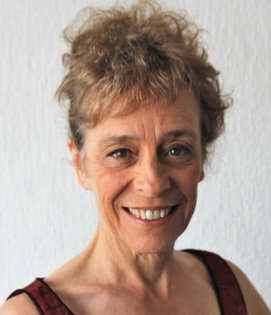 She studied music in Madrid, The Hague and with Nadia Boulanger. She obtained an Early Dance Teacher diploma from the GSMD and a dance certificate from the Sorbonne, Paris. Among other opera productions she has choreographed for Rinaldo, Orlando, Alceste, Giulio Cesare, Ginastera’s Beatrix Cenci, King Arthur, Indes Galantes, Hippolyte et Aricie, Carmen, Massenet’s Manon and Lully’s Bourgeois Gentilhomme. She has collaborated as a dancer and choreographer with Les Arts Florissants, Ris et Danceries, Les Paladins, Elyma Ensemble and the Yepes Trio among others. She works with directors including Francisco Negrin, Alfredo Arias, Jean-Marie Villégier and Mireille Laroche. She has her own company, Donaires Ensemble, which presents baroque dance programs and contemporary dance pieces. She teaches regularly in Europe, South and North America and Japan. She is currently collaborating with with Anna Romaní on the edition of their first book on dance of the Spanish Golden Age: “Introduction to Dance in the Spanish Golden Age, its sources, and its links with French and Italian Dance”.
She studied music in Madrid, The Hague and with Nadia Boulanger. She obtained an Early Dance Teacher diploma from the GSMD and a dance certificate from the Sorbonne, Paris. Among other opera productions she has choreographed for Rinaldo, Orlando, Alceste, Giulio Cesare, Ginastera’s Beatrix Cenci, King Arthur, Indes Galantes, Hippolyte et Aricie, Carmen, Massenet’s Manon and Lully’s Bourgeois Gentilhomme. She has collaborated as a dancer and choreographer with Les Arts Florissants, Ris et Danceries, Les Paladins, Elyma Ensemble and the Yepes Trio among others. She works with directors including Francisco Negrin, Alfredo Arias, Jean-Marie Villégier and Mireille Laroche. She has her own company, Donaires Ensemble, which presents baroque dance programs and contemporary dance pieces. She teaches regularly in Europe, South and North America and Japan. She is currently collaborating with with Anna Romaní on the edition of their first book on dance of the Spanish Golden Age: “Introduction to Dance in the Spanish Golden Age, its sources, and its links with French and Italian Dance”.
Anna Romani, Barcelona, Spain
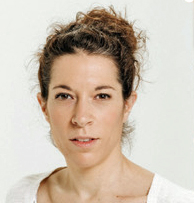 Anna Romaní, born in Barcelona, graduated in Contemporary Dance and Choreography at the Institut del Teatre. She specialises in Renaissance and Baroque dance, having trained with leading international teachers. Since 2005 she has performed with French companies such as Ensemble Donaïres, L’Eventail and Outre Mesure, and collaborated with ensembles including Le Poème Harmonique, Forma Antiqva and Vespres d’Arnadí. She frequently works with the Palau de la Música in projects involving both professional and amateur choirs, as well as family programmes. Alongside her performing career, she has consistently combined artistic practice with research. She co-directs Xuriach, a company dedicated to the study and performance of historical Catalan music and dance. As an educator, she integrates body and music through the Orff approach, and has taught at various conservatories and cultural institutions.
Anna Romaní, born in Barcelona, graduated in Contemporary Dance and Choreography at the Institut del Teatre. She specialises in Renaissance and Baroque dance, having trained with leading international teachers. Since 2005 she has performed with French companies such as Ensemble Donaïres, L’Eventail and Outre Mesure, and collaborated with ensembles including Le Poème Harmonique, Forma Antiqva and Vespres d’Arnadí. She frequently works with the Palau de la Música in projects involving both professional and amateur choirs, as well as family programmes. Alongside her performing career, she has consistently combined artistic practice with research. She co-directs Xuriach, a company dedicated to the study and performance of historical Catalan music and dance. As an educator, she integrates body and music through the Orff approach, and has taught at various conservatories and cultural institutions.
Kurzauftritte
Ballet in Transition: Solovariationen zwischen 1770 und 1840
(Mojca Gal)
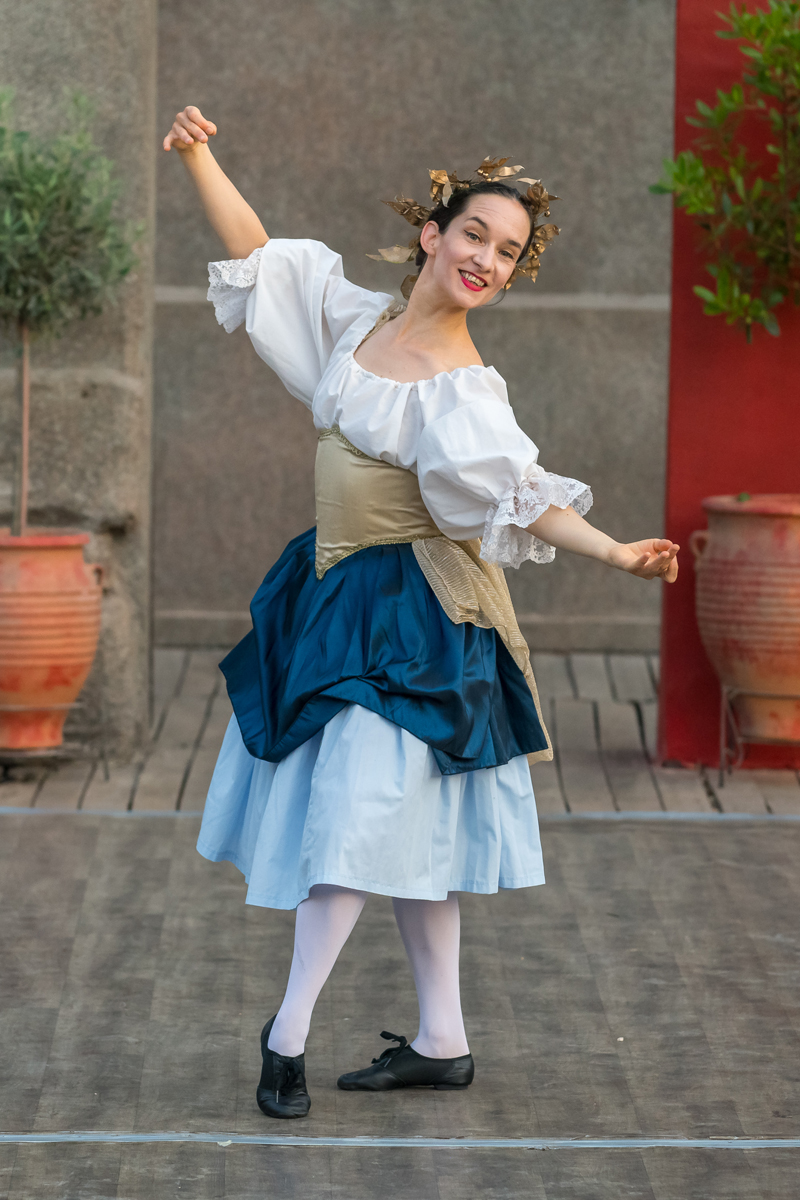 Diese Tanzsuite soll einige technische und choreografische Merkmale aus drei verschiedenen Jahrzehnten der Ballettgeschichte veranschaulichen und damit einige der Kontinuitäten und Veränderungen aufzeigen, die diese Kunstform durchlaufen hat. Als solche soll sie als Ergänzung zu Edmund Fairfax' Vortrag „Ballett im Wandel: 1789–1840” dienen. Der erste Teil präsentiert Choreografien, die drei der vier konventionellen Stile des Balletts des 18. Jahrhunderts (ernst, halb-ernst und komisch) entsprechen, wie sie am Vorabend der Französischen Revolution gepflegt wurden. Sie basieren auf erhaltenen choreografischen Beispielen aus dem 18. Jahrhundert, wie denen im Manuskript von Ferrère aus dem Jahr 1782, sowie auf anderen Textquellen wie Beschreibungen von Tanztechniken, Rezensionen von Aufführungen etc.
Diese Tanzsuite soll einige technische und choreografische Merkmale aus drei verschiedenen Jahrzehnten der Ballettgeschichte veranschaulichen und damit einige der Kontinuitäten und Veränderungen aufzeigen, die diese Kunstform durchlaufen hat. Als solche soll sie als Ergänzung zu Edmund Fairfax' Vortrag „Ballett im Wandel: 1789–1840” dienen. Der erste Teil präsentiert Choreografien, die drei der vier konventionellen Stile des Balletts des 18. Jahrhunderts (ernst, halb-ernst und komisch) entsprechen, wie sie am Vorabend der Französischen Revolution gepflegt wurden. Sie basieren auf erhaltenen choreografischen Beispielen aus dem 18. Jahrhundert, wie denen im Manuskript von Ferrère aus dem Jahr 1782, sowie auf anderen Textquellen wie Beschreibungen von Tanztechniken, Rezensionen von Aufführungen etc.
Der erste Teil wird zu Tanzmusik aus Glucks Oper „Orphée et Eurydice” (1774) und Gardels Ballett „Ninette à la cour” (1777) aufgeführt. Der zweite Teil präsentiert eine Rekonstruktion der Choreografie für einen Spiegeltanz aus Louis Milons Pantomimenballett „Le carnaval de Venise” (1816), wie sie von Henri Justamant beschrieben wurde. Der dritte und letzte Teil präsentiert eine Rekonstruktion der Frauenrolle im Polacca-Teil des Bauernduetts aus dem Ballett Giselle (1841), wie sie von Saint-Léon ausführlich beschrieben wurde.
Mojca Gal, Basel, Schweiz
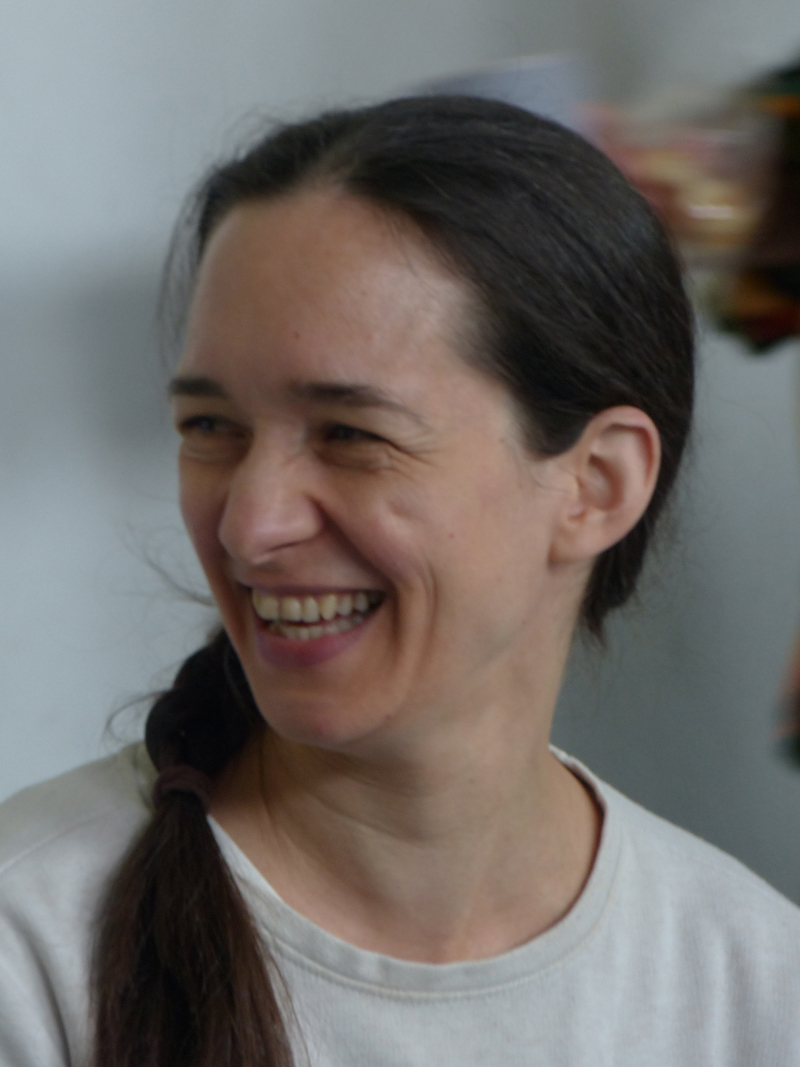 Mojca Gal ist professionelle Violinistin und Tänzerin. Ihre Tanzausbildung umfasst klassisches Ballett in Slowenien, klassischen ägyptischen Tanz und die Cecchetti-Methode bei der ISTD. Seit 2020 arbeitet sie mit dem kanadischen Choreografen Edmund Fairfax an der Rekonstruktion von Balletten aus dem 18. Jahrhundert zusammen. Sie tritt in ganz Europa auf, unter anderem in Zusammenarbeit mit den Potsdamer Festspielen Sanssouci, dem Varaždin Early Music Festival, dem Göttinger Barockorchester, dem Brucknerhaus Linz, Les Passions de l'Ame, dem Ensemble Odyssée, den Innsbrucker Festspielen (letzteres als Mitglied der Tanzkompanie Il corpo barocco) und dem World Dance Congress CID.
Mojca Gal ist professionelle Violinistin und Tänzerin. Ihre Tanzausbildung umfasst klassisches Ballett in Slowenien, klassischen ägyptischen Tanz und die Cecchetti-Methode bei der ISTD. Seit 2020 arbeitet sie mit dem kanadischen Choreografen Edmund Fairfax an der Rekonstruktion von Balletten aus dem 18. Jahrhundert zusammen. Sie tritt in ganz Europa auf, unter anderem in Zusammenarbeit mit den Potsdamer Festspielen Sanssouci, dem Varaždin Early Music Festival, dem Göttinger Barockorchester, dem Brucknerhaus Linz, Les Passions de l'Ame, dem Ensemble Odyssée, den Innsbrucker Festspielen (letzteres als Mitglied der Tanzkompanie Il corpo barocco) und dem World Dance Congress CID.
Als Choreografin schuf Mojca mehrere abendfüllende Tanzproduktionen, darunter „Pygmalion, oder der Sommernachtstraum eines Bildhauers” und Händels „Terpsicore” für die Musikfestspiele Sanssouci Potsdam und das Zürcher Barockorchester, „Von Königen, Göttern und Dämonen” in Zusammenarbeit mit FAMB Basel am Theater Scala Basel und das historische Ballett „Dornröschen” aus dem Jahr 2017.
Candide or the Ballet of Optimism (Extracts)
Compagnie Divertimenty
(Guillaume Jablonka, Irène Feste, Antonin Pinget)
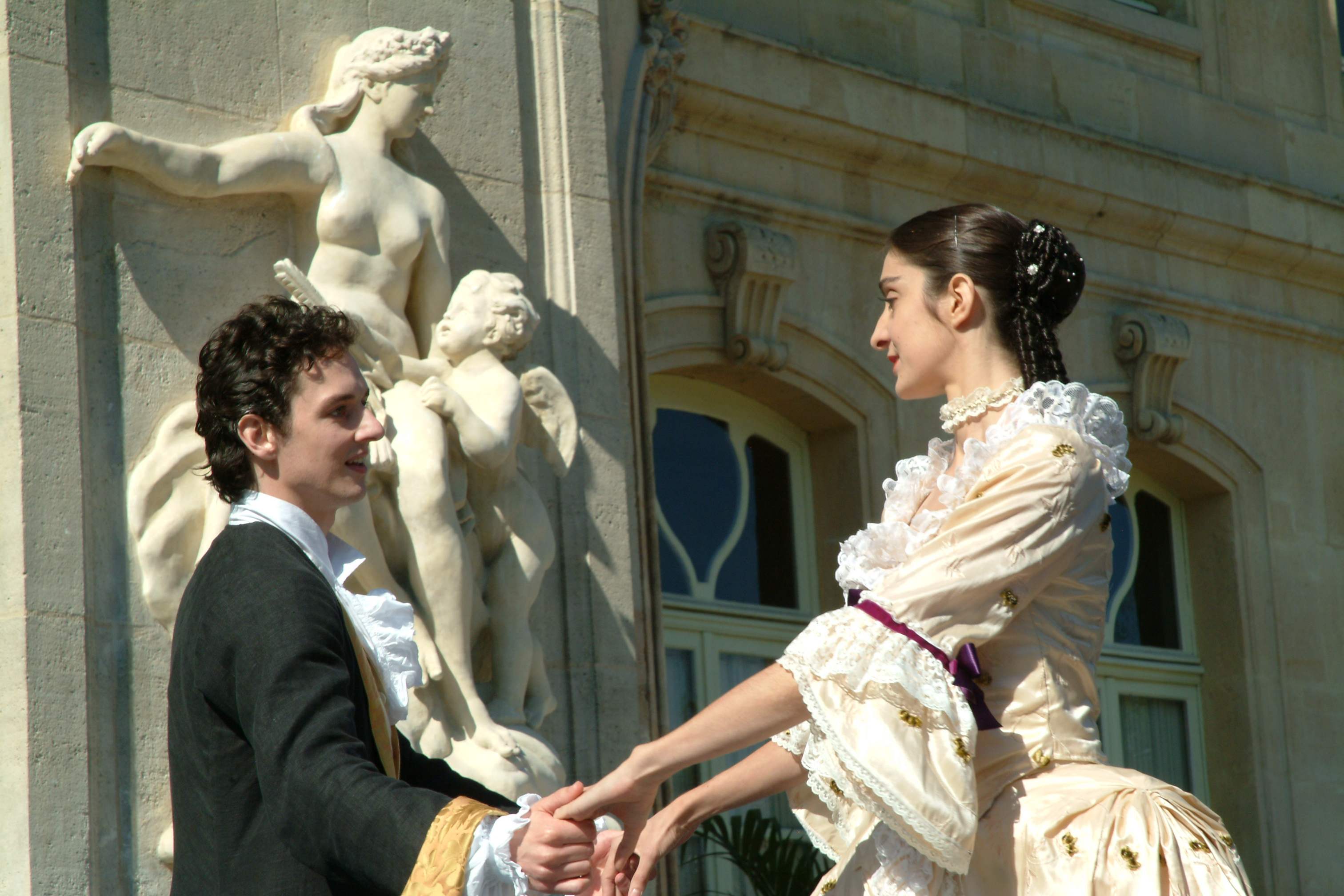 This creation in Dance and Theatre presents the travel story of a young lover where dance embodies the joy of each discovery. Dance does not have the ambition here to tell the story of Candide, nor even to illustrate flatly his adventures, but rather to make sensitive emotions that Candide is going through. It is a complementary dimension to the narrative tale. In the 17th and 18th centuries, the main reasons at the source of dancing on stage are joy and happiness of the exposed situation, a certain form of optimism that some ballet reformers want to challenge in the 18th century. This performance also suggests a return to the repertoire of the dances from the Baroque era which invite us to travel: the Allemande, the Spanish sarabande, the Venetian forlana... Based on Voltaire's work, this philosophical tale with interludes of music and dance builds the occasion for a distantiation from childish rejoicing towards a wise hope and also celebrates in 2026 the 20th anniversary of the company Divertimenty.
This creation in Dance and Theatre presents the travel story of a young lover where dance embodies the joy of each discovery. Dance does not have the ambition here to tell the story of Candide, nor even to illustrate flatly his adventures, but rather to make sensitive emotions that Candide is going through. It is a complementary dimension to the narrative tale. In the 17th and 18th centuries, the main reasons at the source of dancing on stage are joy and happiness of the exposed situation, a certain form of optimism that some ballet reformers want to challenge in the 18th century. This performance also suggests a return to the repertoire of the dances from the Baroque era which invite us to travel: the Allemande, the Spanish sarabande, the Venetian forlana... Based on Voltaire's work, this philosophical tale with interludes of music and dance builds the occasion for a distantiation from childish rejoicing towards a wise hope and also celebrates in 2026 the 20th anniversary of the company Divertimenty.
Guillaume Jablonka, Asnières sur Seine, France
 Guillaume Jablonka's career as a dancer took him to the Ballet du Nord (Roubaix), where he met Jean Guizerix and Wilfride Piollet, before incorporating their Barres Flexibles into his training and teaching. He discovered Baroque dance with Marie-Geneviève Massé's Cie l'Éventail and went on to found the Cie Divertimenty, creating Le Petit Chaperon rouge as a pantomime ballet (Festival Baroque de Pontoise) and Les Coulisses du Ballet vénitien (Opéra-Comique). At the same time, his research focuses on the reconstruction of dances notated during the eighteenth century, notably in the Ferrère manuscript. He has benefited from the Centre National de la Danse's Aide à la Recherche et au Patrimoine en Danse scheme in 2011 and 2020. As ballet master, he contributes to the practical application of the sources in performances at the Théâtre Molière Sorbonne.
Guillaume Jablonka's career as a dancer took him to the Ballet du Nord (Roubaix), where he met Jean Guizerix and Wilfride Piollet, before incorporating their Barres Flexibles into his training and teaching. He discovered Baroque dance with Marie-Geneviève Massé's Cie l'Éventail and went on to found the Cie Divertimenty, creating Le Petit Chaperon rouge as a pantomime ballet (Festival Baroque de Pontoise) and Les Coulisses du Ballet vénitien (Opéra-Comique). At the same time, his research focuses on the reconstruction of dances notated during the eighteenth century, notably in the Ferrère manuscript. He has benefited from the Centre National de la Danse's Aide à la Recherche et au Patrimoine en Danse scheme in 2011 and 2020. As ballet master, he contributes to the practical application of the sources in performances at the Théâtre Molière Sorbonne.
Irène Feste, Arcueil, France
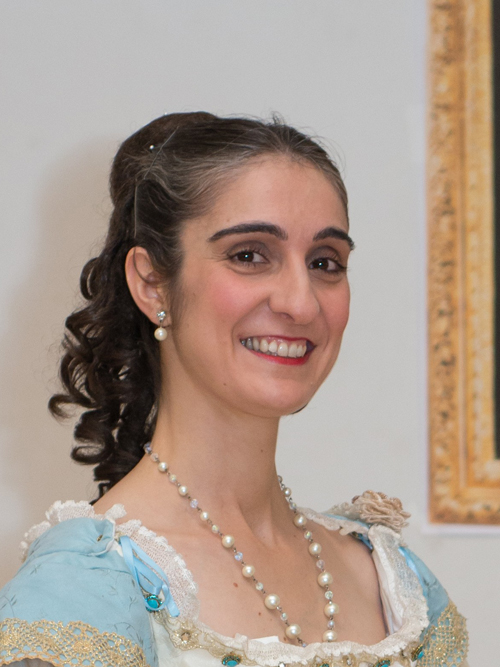 A dancer, choreographer and teacher specialized in early dance from the 16th to the 19th century. She trained in Baroque dance with Christine Bayle and her company L'Eclat des Muses. She has performed with several companies in France and Europe (Danses au (Pas)sé, Les Corps Eloquents, Divertimenty, Doulce Mémoire, Il Ballo...). She has choreographed for the theatre in productions by Pascal Ruiz and for the cinema (Les Trois Mousquetaires by Martin Bourboulon; Le Comte de Monte-Cristo by Alexandre De La Patellière and Matthieu Delaporte).
A dancer, choreographer and teacher specialized in early dance from the 16th to the 19th century. She trained in Baroque dance with Christine Bayle and her company L'Eclat des Muses. She has performed with several companies in France and Europe (Danses au (Pas)sé, Les Corps Eloquents, Divertimenty, Doulce Mémoire, Il Ballo...). She has choreographed for the theatre in productions by Pascal Ruiz and for the cinema (Les Trois Mousquetaires by Martin Bourboulon; Le Comte de Monte-Cristo by Alexandre De La Patellière and Matthieu Delaporte).
Her research focuses on the development of dance in the early 19th century, and has been awarded several research grants from the Centre national de la Danse: on the treatises of Jean-Henri Gourdoux-Daux, the notebooks of Michel Saint-Léon and on the quadrilles of Jean-Etienne Despréaux and his system of choreographic notation, La Terpsichorographie. This research was supported by the Centre National de la Danse, the Institut National d'Histoire de l'Art and the Bibliothèque nationale de France.
Antonin Pinget, Lyon, France
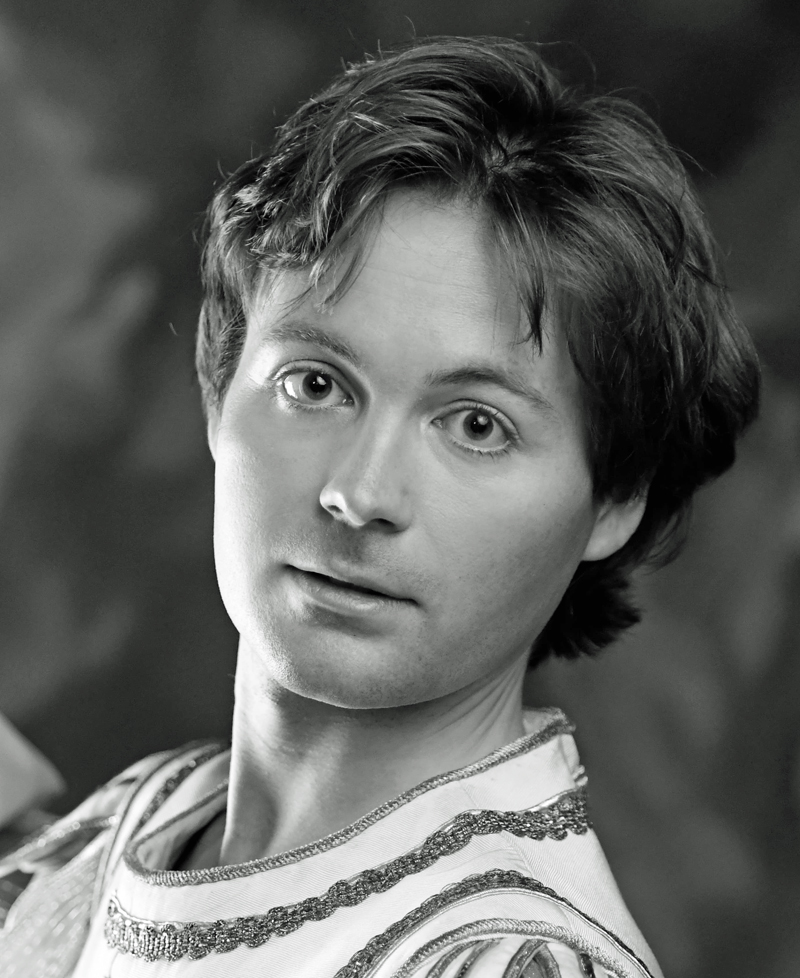 A multi-disciplinary dancer (contemporary, classical, ballroom, folk and tap), Antonin Pinget is a specialist in Early dance. He has worked with various companies (Renaissance, Baroque and 19th century) such as Les Boréades, Outre-mesure, Corpo Barocco, Les Corps Eloquents, HéliosKine, Divertimenty, JMB Compagnie and the Opera Royal of Versailles, as well as with orchestral ensembles such as Doulce Mémoire and Les Arts Florissants. Through his practice and research, he regularly gives masterclasses and workshops for amateurs, musicians and singers, notably at the HEM in Geneva and the CNSMD and CRR in Lyon. He is member of PRO DA (French Federation of Early Dance Professionals) and the CID (International Dance Council).
A multi-disciplinary dancer (contemporary, classical, ballroom, folk and tap), Antonin Pinget is a specialist in Early dance. He has worked with various companies (Renaissance, Baroque and 19th century) such as Les Boréades, Outre-mesure, Corpo Barocco, Les Corps Eloquents, HéliosKine, Divertimenty, JMB Compagnie and the Opera Royal of Versailles, as well as with orchestral ensembles such as Doulce Mémoire and Les Arts Florissants. Through his practice and research, he regularly gives masterclasses and workshops for amateurs, musicians and singers, notably at the HEM in Geneva and the CNSMD and CRR in Lyon. He is member of PRO DA (French Federation of Early Dance Professionals) and the CID (International Dance Council).
“Trajectories”
Performance on Spanish Golden Age Dance and its relation with the French Baroque Dance
(Anna Yepes and Anna Romani)
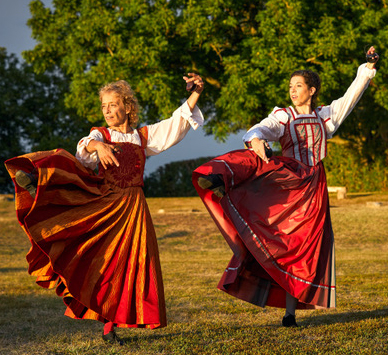 Trajectories invites us to enter into a dialogue between two choreographic universes: Spanish Golden Age Dance and French Baroque Dance. These styles, though distinct, are intertwined through history: the marriages of Louis XIII and Louis XIV to Spanish infantas reinforced the cultural bonds between the two courts, and dance became one of the most vivid expressions of this exchange.
Trajectories invites us to enter into a dialogue between two choreographic universes: Spanish Golden Age Dance and French Baroque Dance. These styles, though distinct, are intertwined through history: the marriages of Louis XIII and Louis XIV to Spanish infantas reinforced the cultural bonds between the two courts, and dance became one of the most vivid expressions of this exchange.
Like a river, dances are born in a community, but soon travel, transform, grow and are nourished by encounters along the way, constantly reshaping their trajectory.
In this performance, Jaque’s Folías resonates with Pécour’s celebrated Folies d’Espagne; González’s Mariona is faithfully reconstructed from the manuscript, while the Españoleta just takes inspiration from it; Pécour’s Loure pour une femme converses with a spirited Jácara by Ana Yepes, drawn from Jaque’s manuscript; and, in a culminating moment, the strength of the Chacona de Arañés closes the journey.
Ana Yepes and Anna Romaní do not simply reconstruct history: they bring it alive. As was common in the music of the 17th century, from a given structure they weave improvisations — virtuosic variations combining steps with expressive arm movements, the rhythm of castanets, and the percussive force of zapateado.
Trajectories is a living voyage through memory and imagination, where styles, traditions, and improvisations converge in motion.
Anna Yepes, La Genevraye, France
 She studied music in Madrid, The Hague and with Nadia Boulanger. She obtained an Early Dance Teacher diploma from the GSMD and a dance certificate from the Sorbonne, Paris. Among other opera productions she has choreographed for Rinaldo, Orlando, Alceste, Giulio Cesare, Ginastera’s Beatrix Cenci, King Arthur, Indes Galantes, Hippolyte et Aricie, Carmen, Massenet’s Manon and Lully’s Bourgeois Gentilhomme. She has collaborated as a dancer and choreographer with Les Arts Florissants, Ris et Danceries, Les Paladins, Elyma Ensemble and the Yepes Trio among others. She works with directors including Francisco Negrin, Alfredo Arias, Jean-Marie Villégier and Mireille Laroche. She has her own company, Donaires Ensemble, which presents baroque dance programs and contemporary dance pieces. She teaches regularly in Europe, South and North America and Japan. She is currently collaborating with with Anna Romaní on the edition of their first book on dance of the Spanish Golden Age: “Introduction to Dance in the Spanish Golden Age, its sources, and its links with French and Italian Dance”.
She studied music in Madrid, The Hague and with Nadia Boulanger. She obtained an Early Dance Teacher diploma from the GSMD and a dance certificate from the Sorbonne, Paris. Among other opera productions she has choreographed for Rinaldo, Orlando, Alceste, Giulio Cesare, Ginastera’s Beatrix Cenci, King Arthur, Indes Galantes, Hippolyte et Aricie, Carmen, Massenet’s Manon and Lully’s Bourgeois Gentilhomme. She has collaborated as a dancer and choreographer with Les Arts Florissants, Ris et Danceries, Les Paladins, Elyma Ensemble and the Yepes Trio among others. She works with directors including Francisco Negrin, Alfredo Arias, Jean-Marie Villégier and Mireille Laroche. She has her own company, Donaires Ensemble, which presents baroque dance programs and contemporary dance pieces. She teaches regularly in Europe, South and North America and Japan. She is currently collaborating with with Anna Romaní on the edition of their first book on dance of the Spanish Golden Age: “Introduction to Dance in the Spanish Golden Age, its sources, and its links with French and Italian Dance”.
Anna Romani, Barcelona, Spain
 Anna Romaní, born in Barcelona, graduated in Contemporary Dance and Choreography at the Institut del Teatre. She specialises in Renaissance and Baroque dance, having trained with leading international teachers. Since 2005 she has performed with French companies such as Ensemble Donaïres, L’Eventail and Outre Mesure, and collaborated with ensembles including Le Poème Harmonique, Forma Antiqva and Vespres d’Arnadí. She frequently works with the Palau de la Música in projects involving both professional and amateur choirs, as well as family programmes. Alongside her performing career, she has consistently combined artistic practice with research. She co-directs Xuriach, a company dedicated to the study and performance of historical Catalan music and dance. As an educator, she integrates body and music through the Orff approach, and has taught at various conservatories and cultural institutions.
Anna Romaní, born in Barcelona, graduated in Contemporary Dance and Choreography at the Institut del Teatre. She specialises in Renaissance and Baroque dance, having trained with leading international teachers. Since 2005 she has performed with French companies such as Ensemble Donaïres, L’Eventail and Outre Mesure, and collaborated with ensembles including Le Poème Harmonique, Forma Antiqva and Vespres d’Arnadí. She frequently works with the Palau de la Música in projects involving both professional and amateur choirs, as well as family programmes. Alongside her performing career, she has consistently combined artistic practice with research. She co-directs Xuriach, a company dedicated to the study and performance of historical Catalan music and dance. As an educator, she integrates body and music through the Orff approach, and has taught at various conservatories and cultural institutions.
Tanzabende
Anglaisen und Quadrillen aus Breitkopfs "Terpsichore" 1789
(Giles Bennett)
Christoph Gottlob Breitkopf (1750-1800) war nicht nur Enkel des Leipziger Verlagsgründers und Korrespondenzpartner führender Komponisten, er hatte auch eine Doppelbegabung als Amateur-Komponist und -Choreograph. Neben dem einzigartigen Oberon, ebenfalls von 1789, veröffentlichte er 1789 in seiner "Terpsichore" verschiedenste Tänze. Neben einem für einen vergnügten Ball wohl zu aufwendigen Gratulations-Ballet enthält das separat überlieferte Heft mit Choreographien Anweisungen zu unterhaltsamen und einfallsreichen Anglaisen und Quadrillen mit eingängigen Melodien, darunter eine „Gewitter-Anglaise“ sowie eine Folge von Deutschen, die als Anglaise mit Walzstrophe zu tanzen sind. Quadrillen und (mit französischen Pas zu tanzende) Francaisen runden sowohl die Sammlung als auch eine Rothenfelser Auswahl ab.
Giles Bennett, München, Deutschland
 Giles Bennett, Historiker, wissenschaftlicher Mitarbeiter am Zentrum für Holocaust-Studien am Institut für Zeitgeschichte München, Tänzer im Ensemble "La Danza München" (Leitung: Jadwiga Nowaczek - www.barocktanz.de), Mitherausgeber von " Barocktanz im Zeichen französisch-deutschen Kulturtransfers: Quellen zur Tanzkultur um 1700" Hildesheim 2008, verschiedene Aufsätze zum Tanz vom 17. bis zum frühen 19. Jahrhundert und dessen Rezeption ab dem späten 19. Jahrhundert.
Giles Bennett, Historiker, wissenschaftlicher Mitarbeiter am Zentrum für Holocaust-Studien am Institut für Zeitgeschichte München, Tänzer im Ensemble "La Danza München" (Leitung: Jadwiga Nowaczek - www.barocktanz.de), Mitherausgeber von " Barocktanz im Zeichen französisch-deutschen Kulturtransfers: Quellen zur Tanzkultur um 1700" Hildesheim 2008, verschiedene Aufsätze zum Tanz vom 17. bis zum frühen 19. Jahrhundert und dessen Rezeption ab dem späten 19. Jahrhundert.
Dances from Playford's Dancing Master
(Ann Hinchliffe)
The dancing manuals begun by John Playford in 1651 include hundreds of country dances, apart from tunes without dance figures. Though they have many common elements, other aspects changed through the years, mirroring historical events: the Civil War, the Protectorate, and the Restoration.
In the dance evening, dances from earlier and later editions of the Dancing Master are offered, comparing dances before and after the English Restoration. We will also try some steps like coranto singles and doubles and fleuret steps.
Ann Hinchliffe, Wallasey, United Kingdom
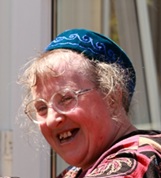 I have been active in English folk music and dance from childhood, dancing, playing, performing and teaching with folk festivals, morris sides, ceilidh bands, clubs, schools and community groups. As a young teacher, presenting Tudors and Stuarts to my classes, I encountered historical dance and fell in love with it, particularly the English corpus of the 16th to early 19th centuries which is so evidently the progenitor of morris and folk dance. Having joined HDS and EDC, I started running classes in south west England which led to a lively partnership over 9 years with the National Trust and English Heritage. This demanded more research, chiefly with HDS courses, and resulted in invitations to deliver lectures in the HDS lockdown series and classes or workshops at folk festivals across UK. I have worked with wonderful musicians playing a variety of instruments and hold that nothing is better than real live music for dancing.
I have been active in English folk music and dance from childhood, dancing, playing, performing and teaching with folk festivals, morris sides, ceilidh bands, clubs, schools and community groups. As a young teacher, presenting Tudors and Stuarts to my classes, I encountered historical dance and fell in love with it, particularly the English corpus of the 16th to early 19th centuries which is so evidently the progenitor of morris and folk dance. Having joined HDS and EDC, I started running classes in south west England which led to a lively partnership over 9 years with the National Trust and English Heritage. This demanded more research, chiefly with HDS courses, and resulted in invitations to deliver lectures in the HDS lockdown series and classes or workshops at folk festivals across UK. I have worked with wonderful musicians playing a variety of instruments and hold that nothing is better than real live music for dancing.
From double step to rant step: 450 years of English country dance
(Cécile Laye)
The selection of dances will be chosen from the four main periods in relation to country dancing, to give credit to this long-lasting repertoire.
Going back in time as far as the repertoire edited by John Playford, direct heir of the measures and Italian Balli of the preceding century, we will proceed through the many 18th century editors competing with the Dancing Master, reaching the Regency period to conclude with traditional dances and modern choreographies.
Lively dances will alternate with more stately ones, to cater for all tastes and abilities.
Cécile Laye, France
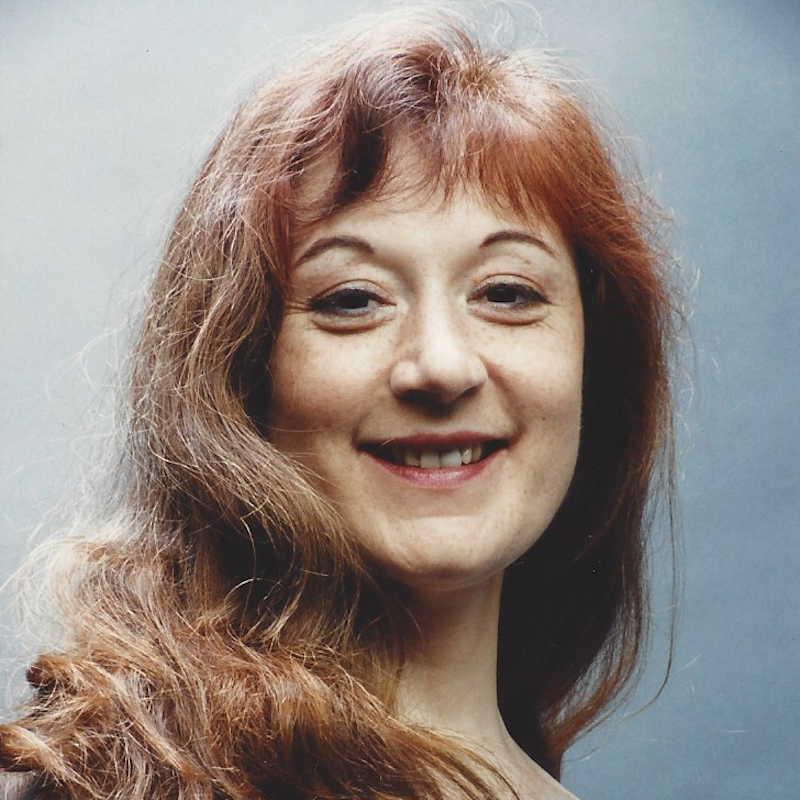 Cécile Laye is a trained dancer and comedian who specialized in early dance while studying in England (The Historical Dance Society - Nonsuch History and Dance - English Folk Dance and Song Society). In France, she worked under the direction of renowned pedagogues or researchers such as Francine Lancelot, Andrea Francalanci and Barbara Sparti.
Cécile Laye is a trained dancer and comedian who specialized in early dance while studying in England (The Historical Dance Society - Nonsuch History and Dance - English Folk Dance and Song Society). In France, she worked under the direction of renowned pedagogues or researchers such as Francine Lancelot, Andrea Francalanci and Barbara Sparti.
In 1998, she founded CHESTNUT (chestnut.fr), producing dance-theatre shows in Paris and beyond. In 2002, she created a school for a methodical teaching of English Figure Dance within which she offers each year, a very extensive season of courses, dance classes, evening dances and periods balls both in France and in England. She worked as artistic director for the six dance albums produced by CHESTNUT.
In 2016 and 2022, she received a grant from Centre National de la Danse (CN D) to run two different research projects on two aspects of the English country dance repertoire.
She regularly teaches at charities, music schools, and festivals in France and abroad, including Belgium, the US (Amherst Early Music Festival), and Poland (Cracovia Danza Court Dance Festival).
Symposium Special (31.5. - 3.6.2026)
"The Art of Dancing" - Kellom Tomlinson und die Schönheit des Port de Bras
(Caroline Copeland)
Im Mittelpunkt stehen Kellom Tomlinsons „The Art of Dancing“ (1735), seine Choreographien und sein Stil in Schritten und Port de Bras.
Caroline Copeland, New York, USA ist stellvertretende Direktorin der New York Baroque Dance Company. Sie unterrichtet an der Tanzfakultät der Hofstra University und am SUNY Purchase Conservatory of Dance sowie als Gastdozentin für das Programm „Historical Performance“ der Juilliard School.
Der Kurs richtet sich an Tänzerinnen und Tänzer mit guten Kenntnissen im Barocktanz. Die Unterrichtssprache ist Englisch.

